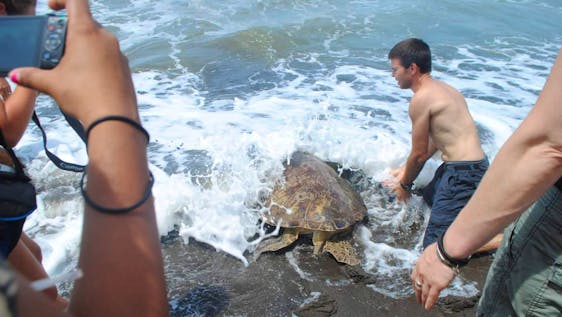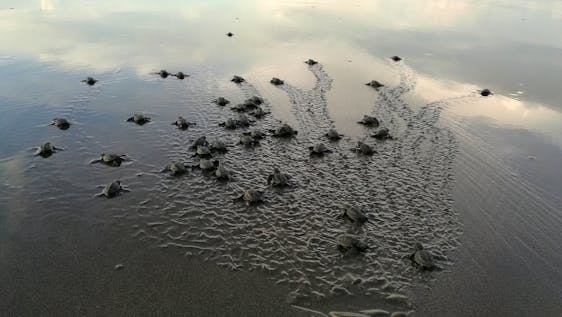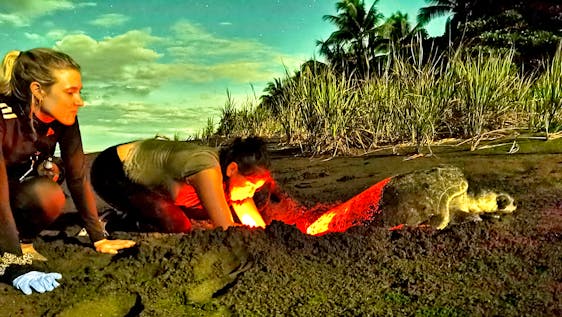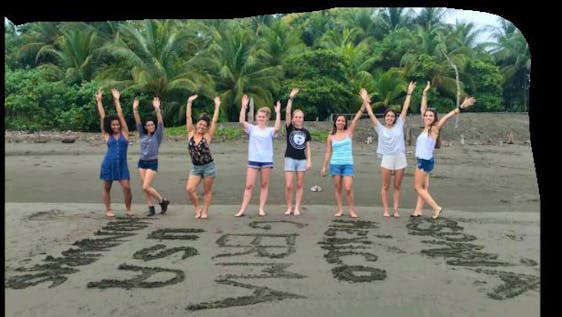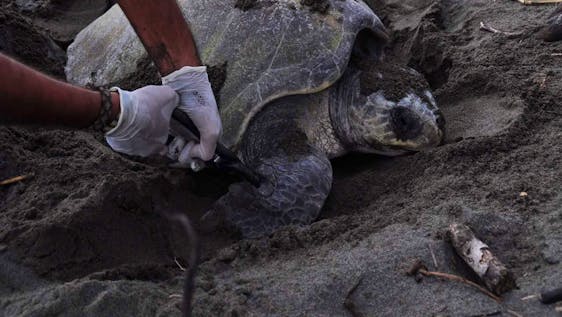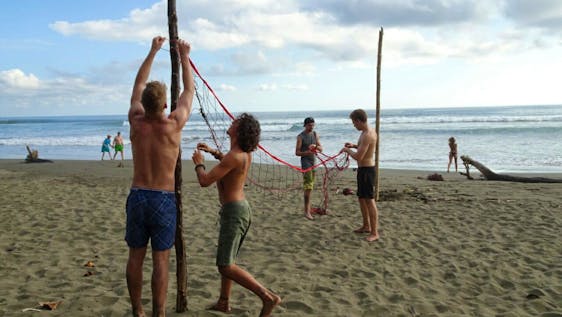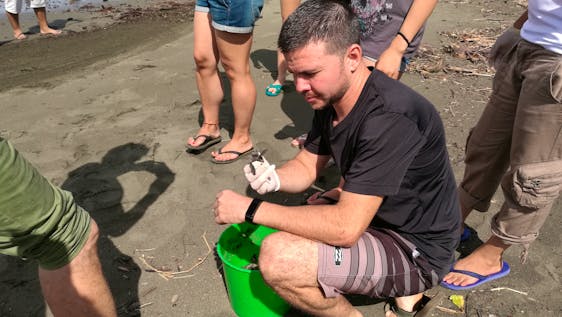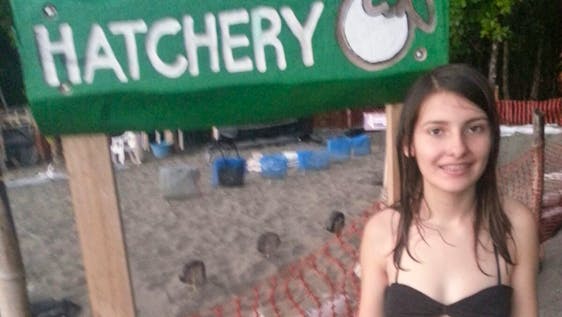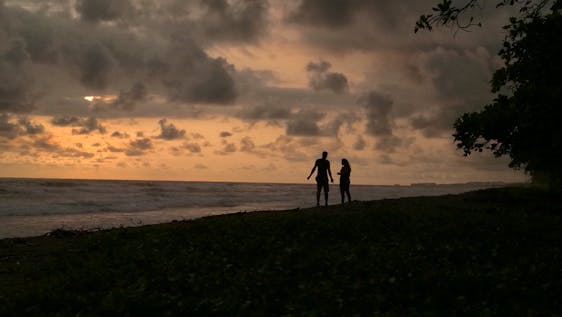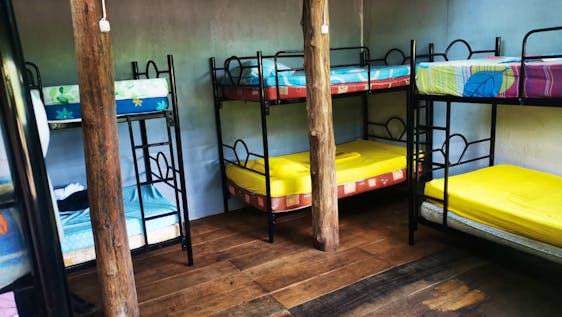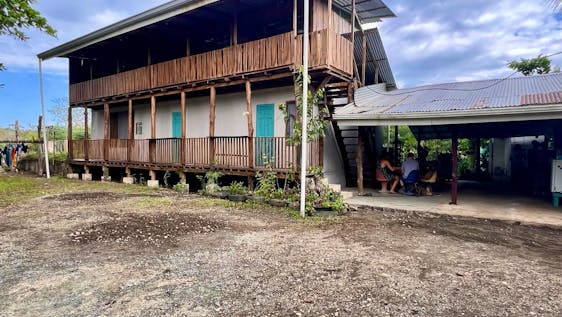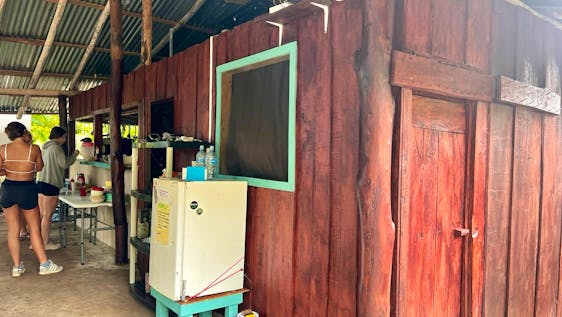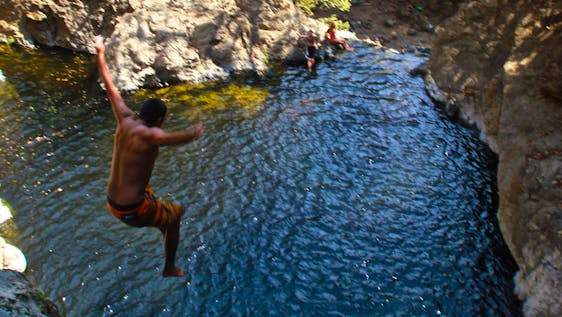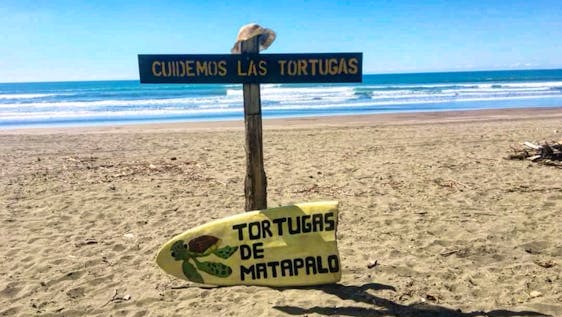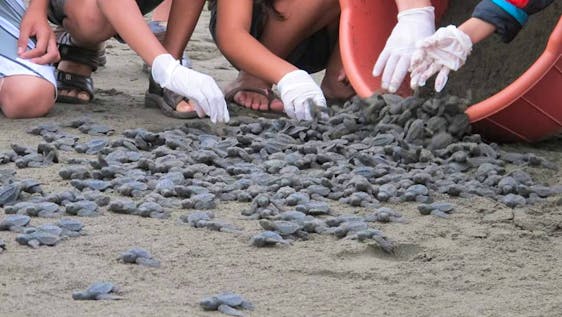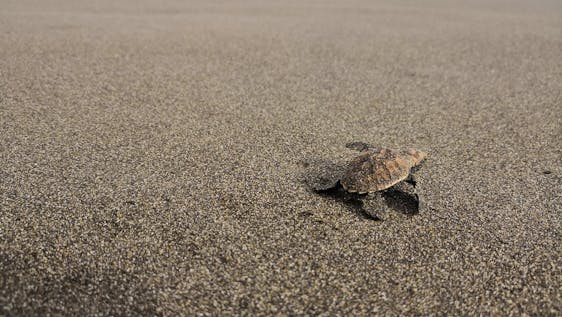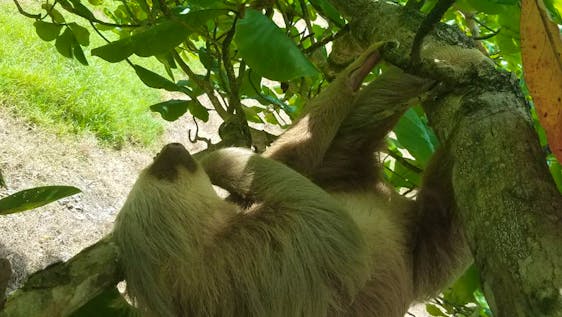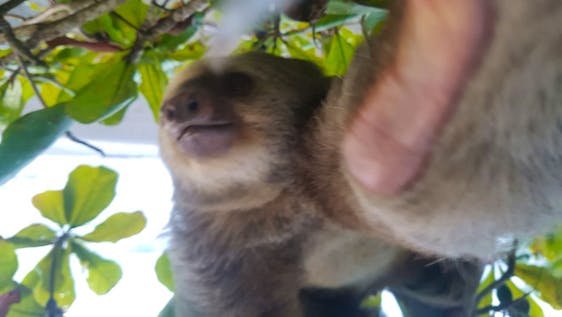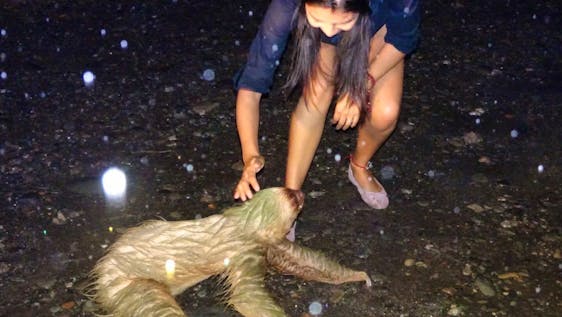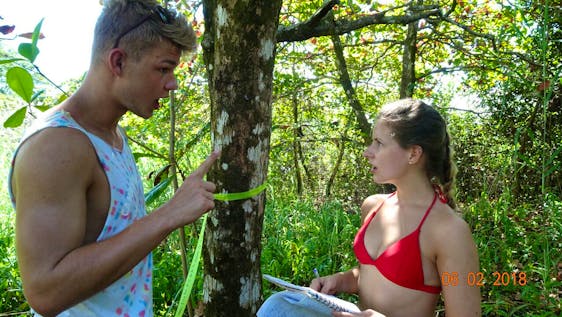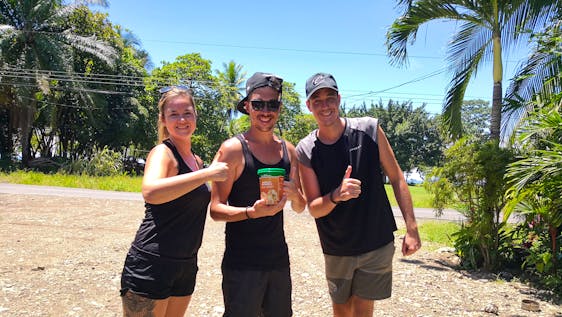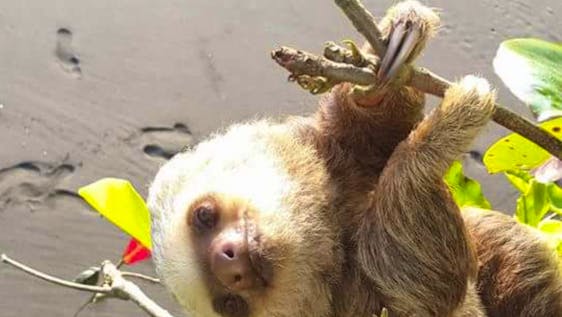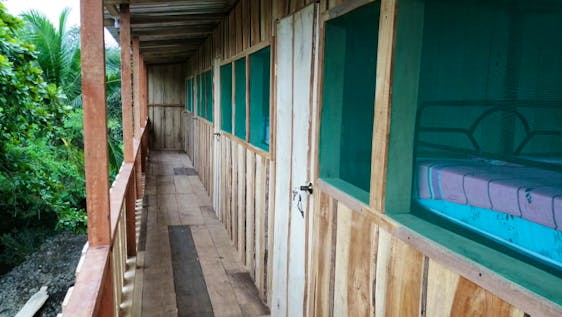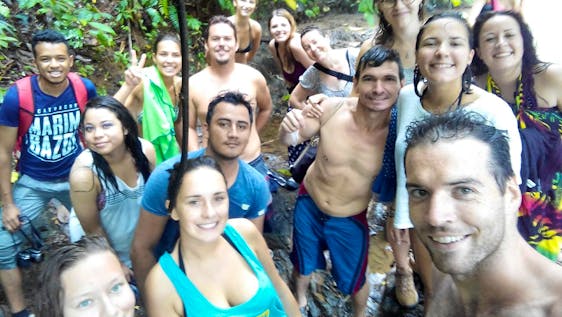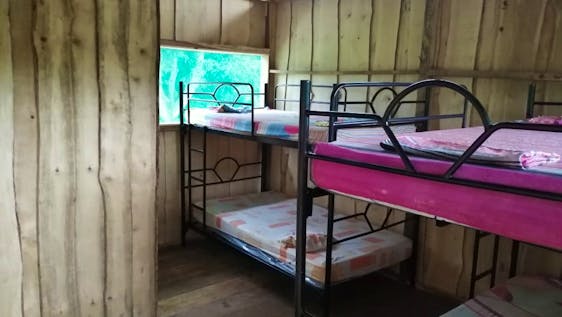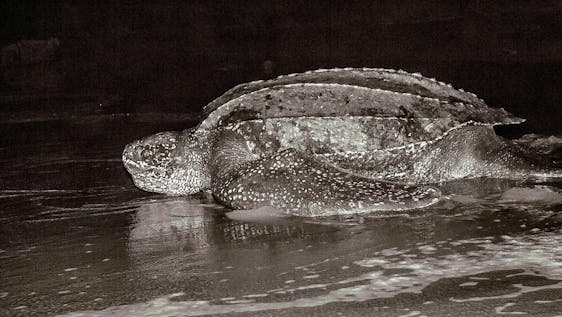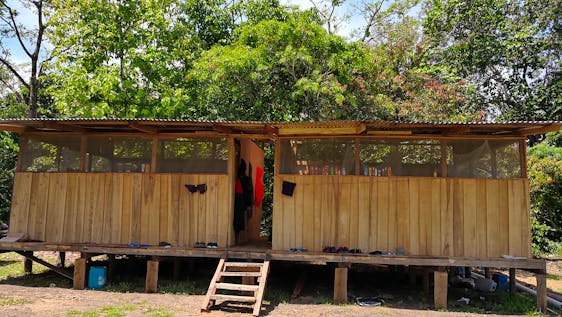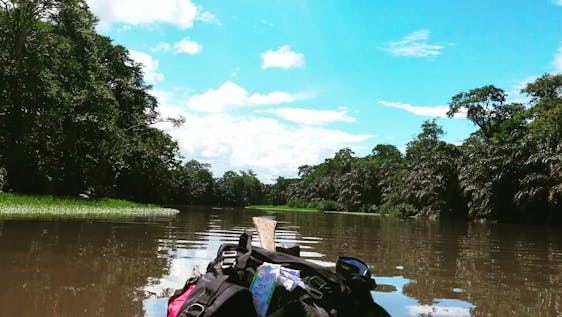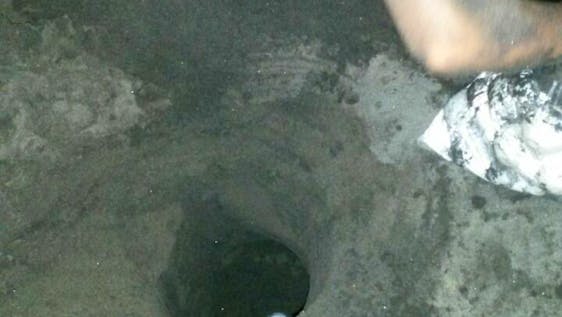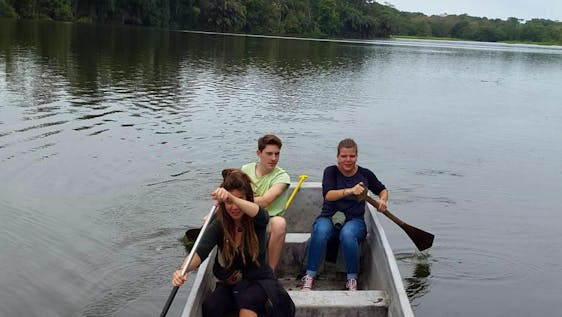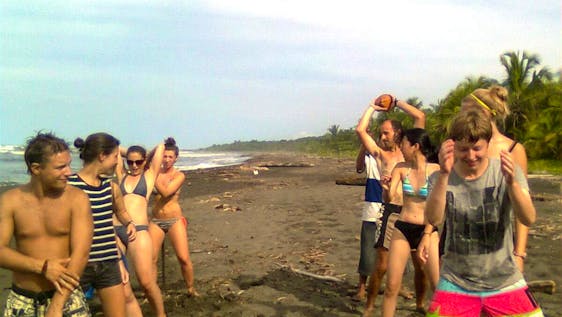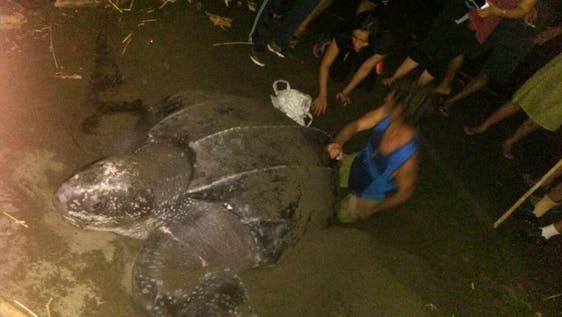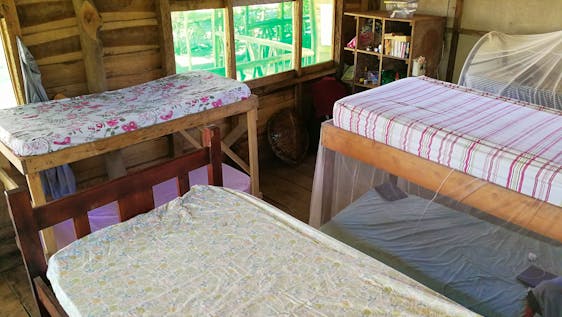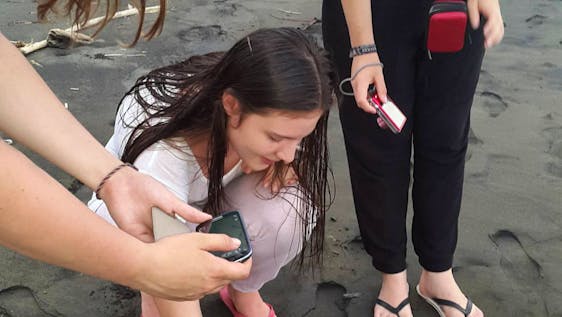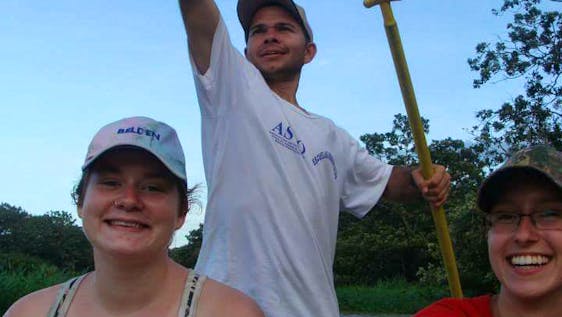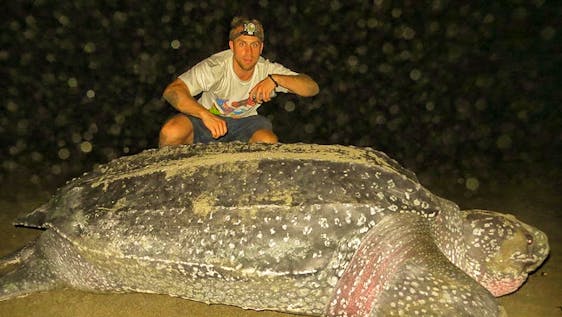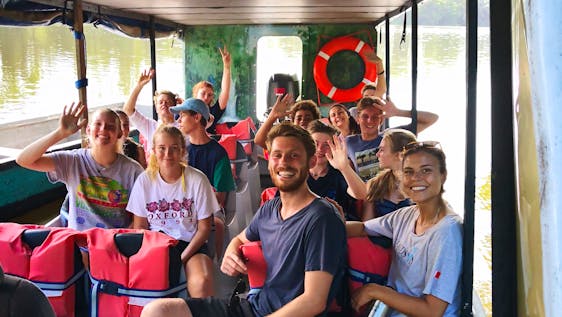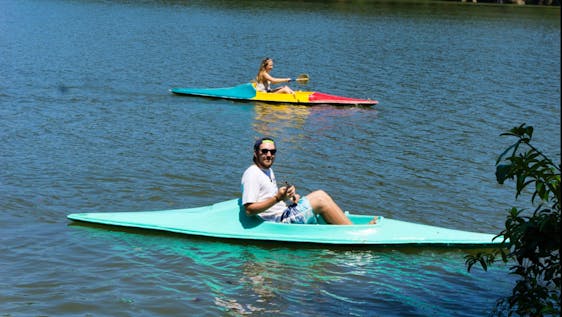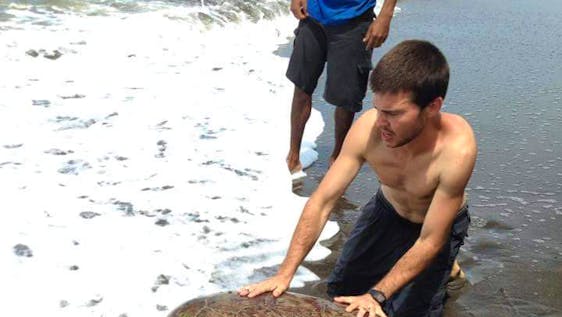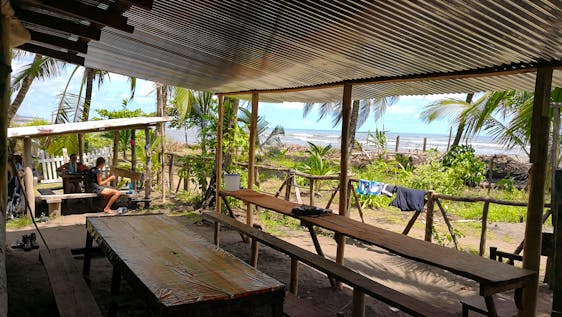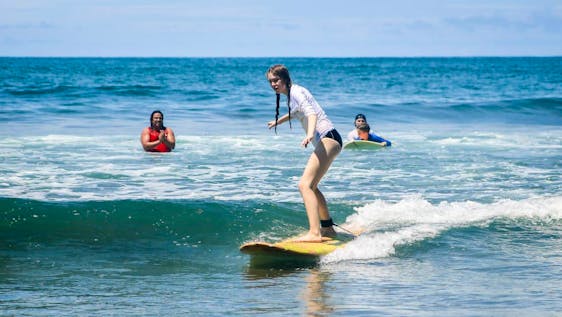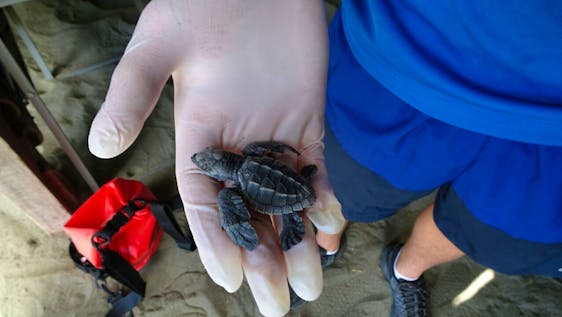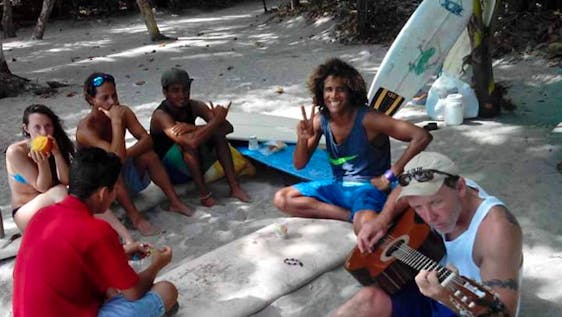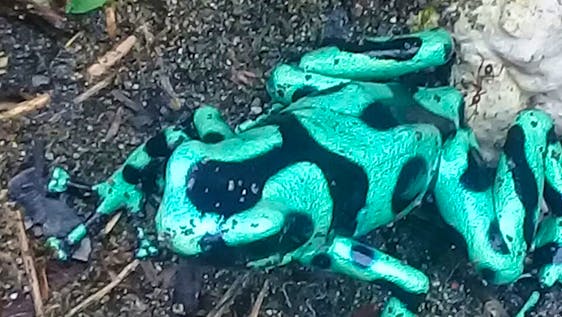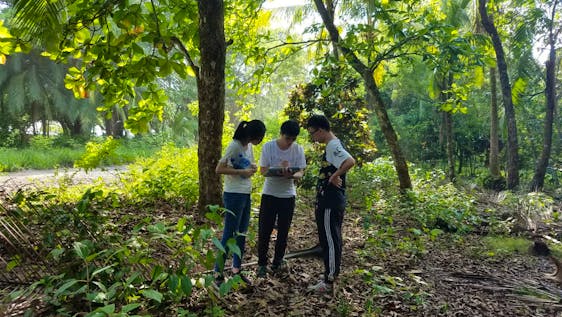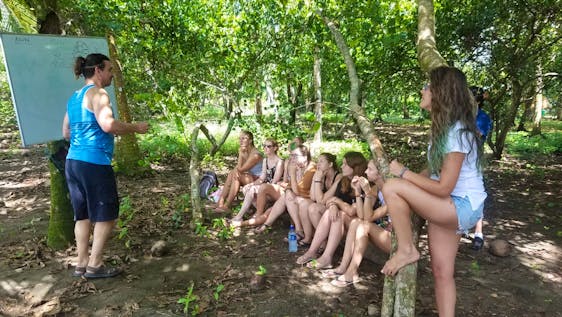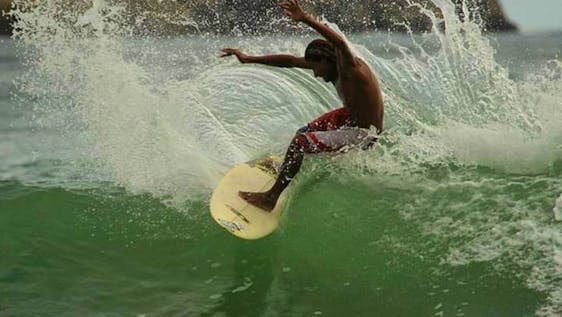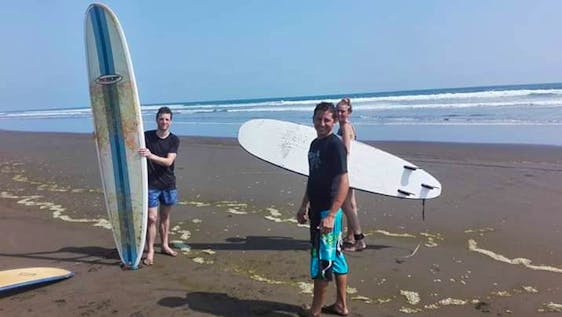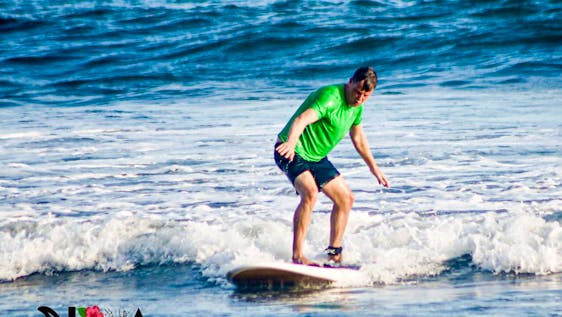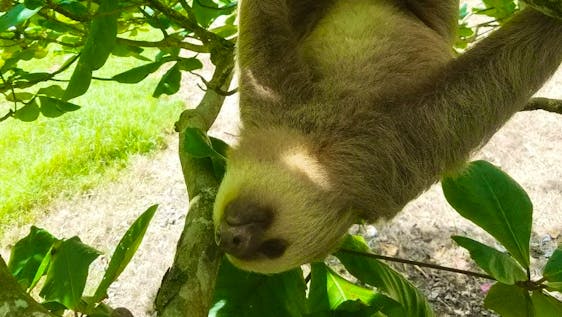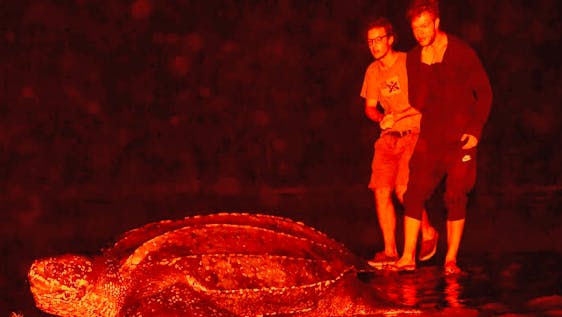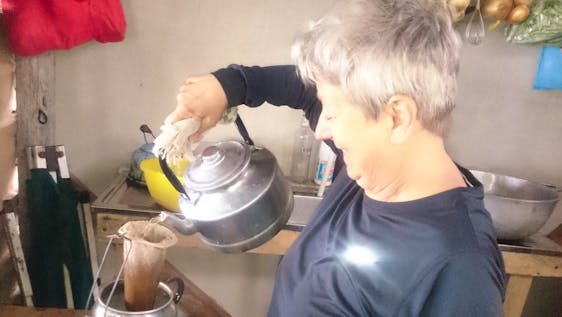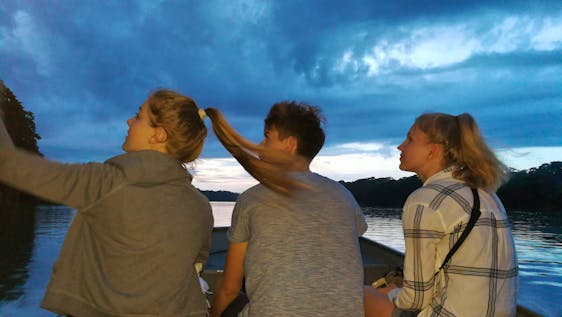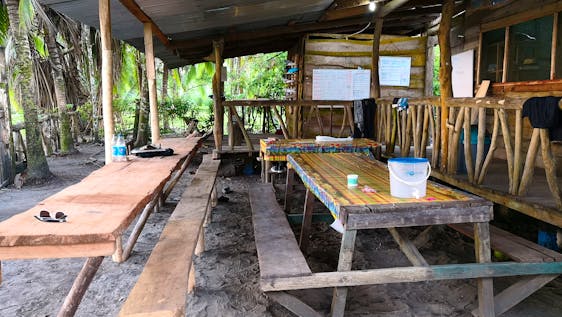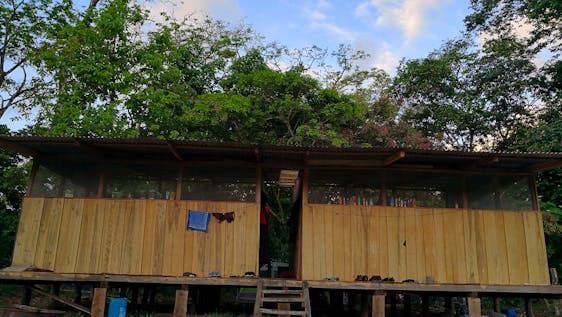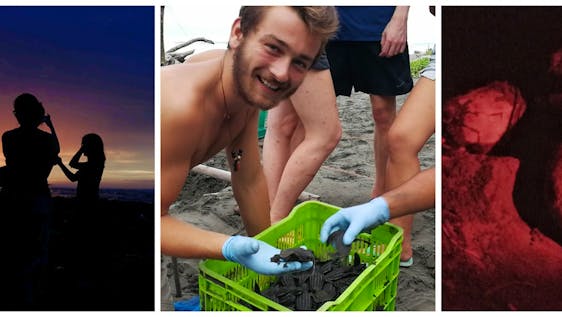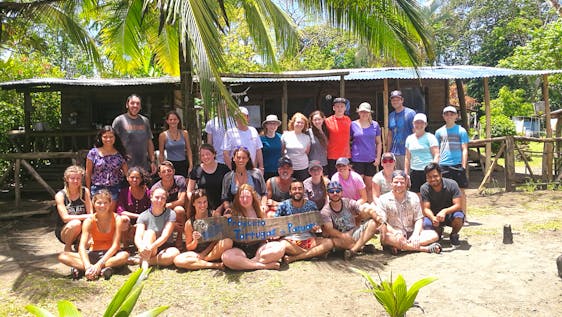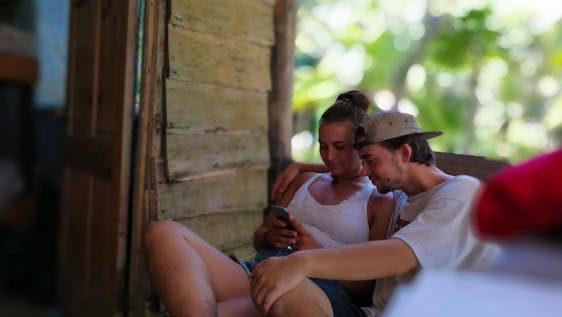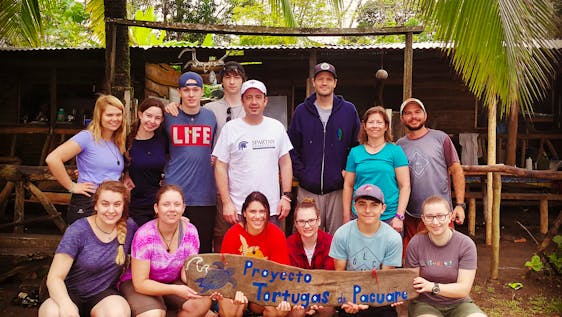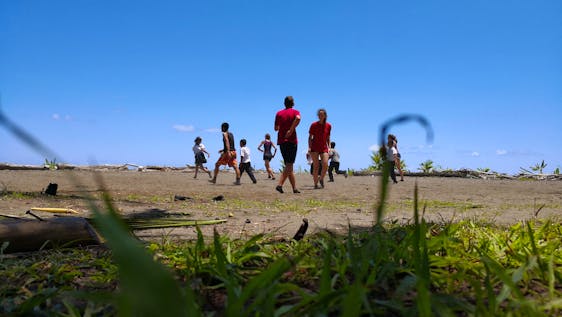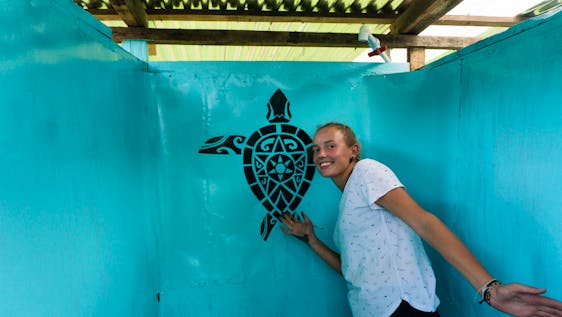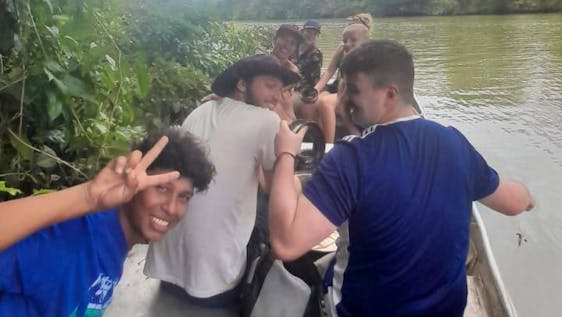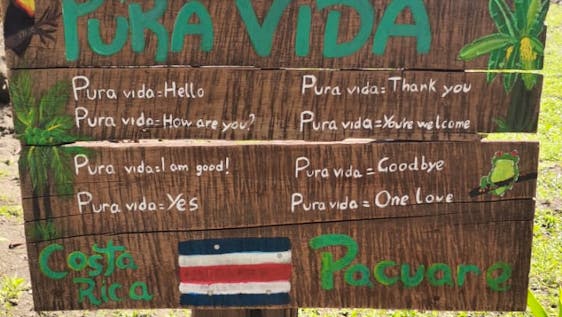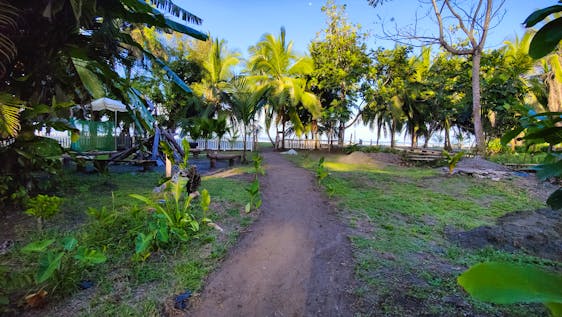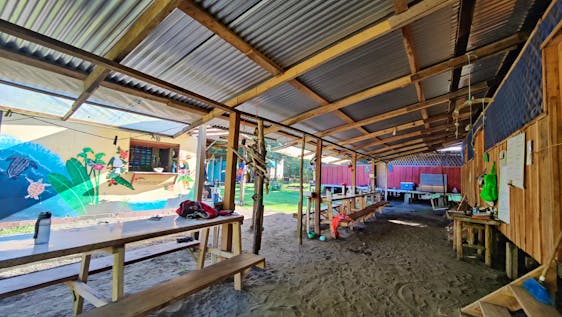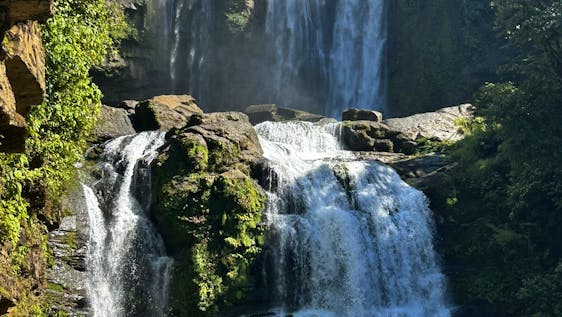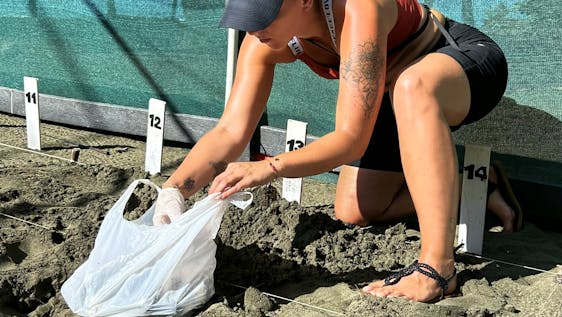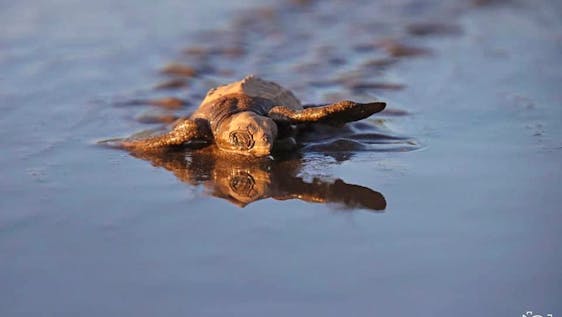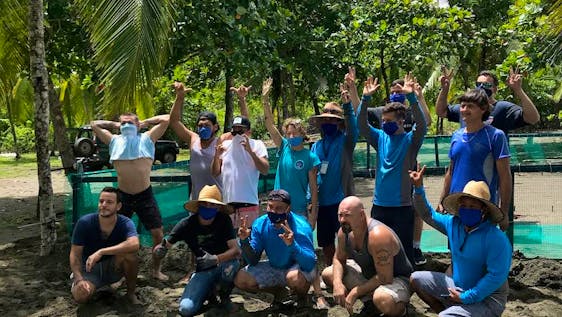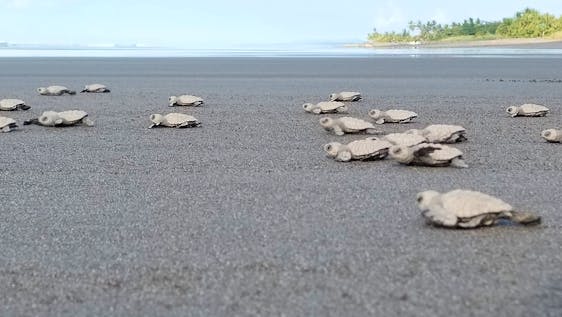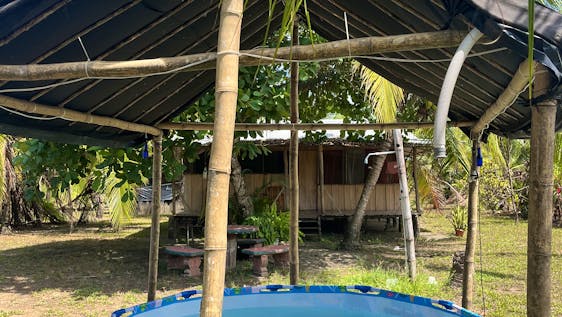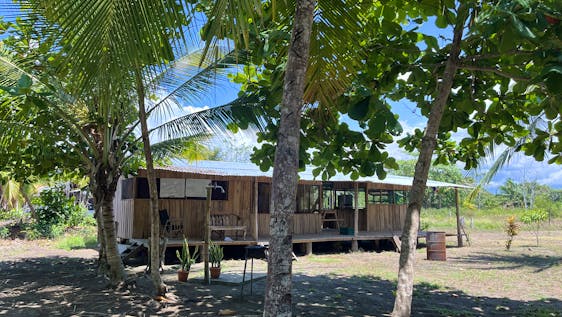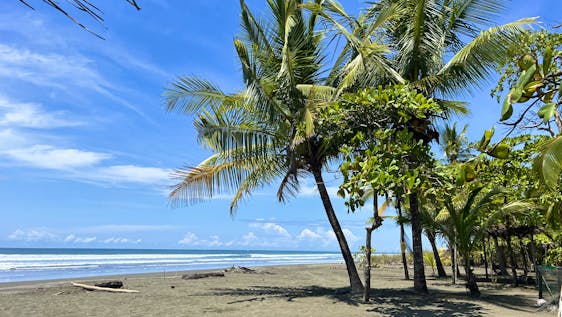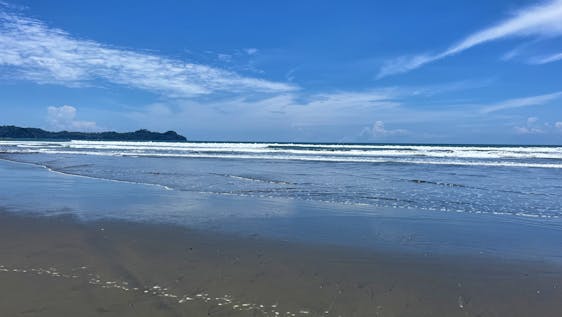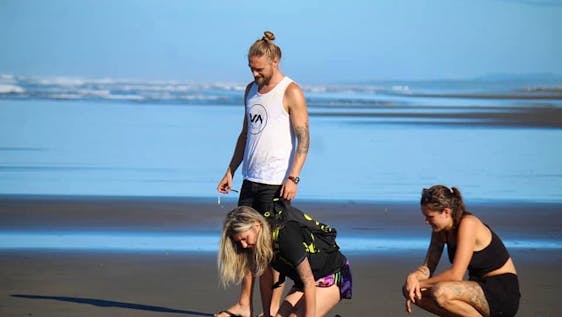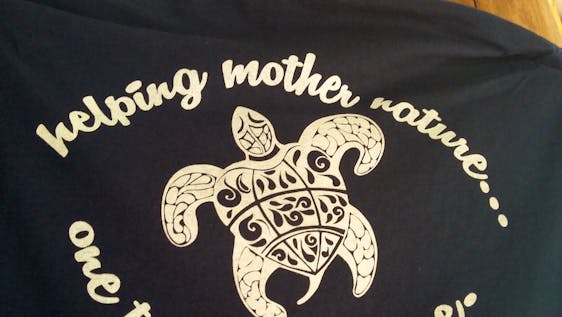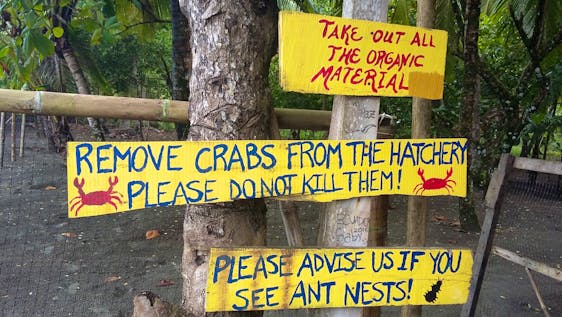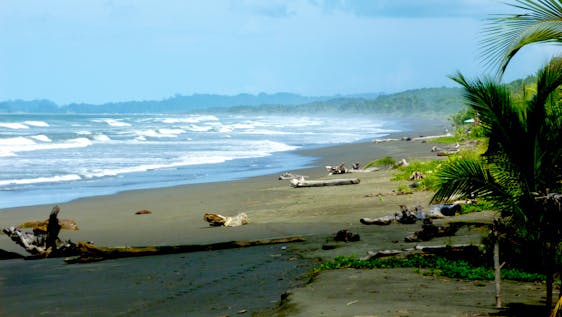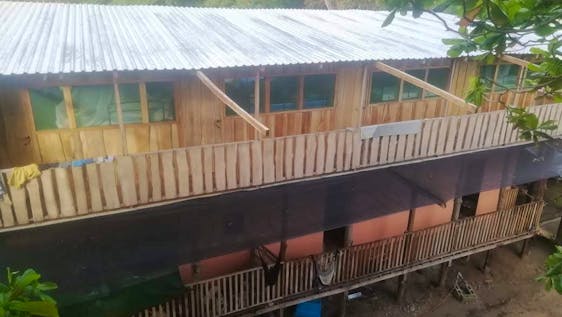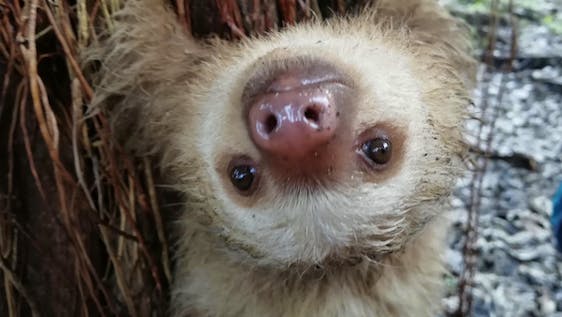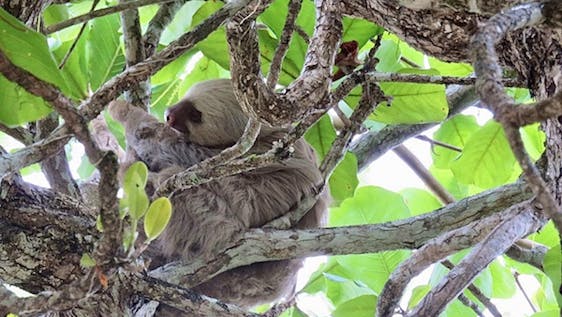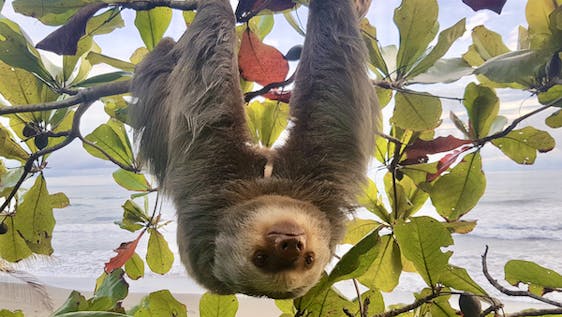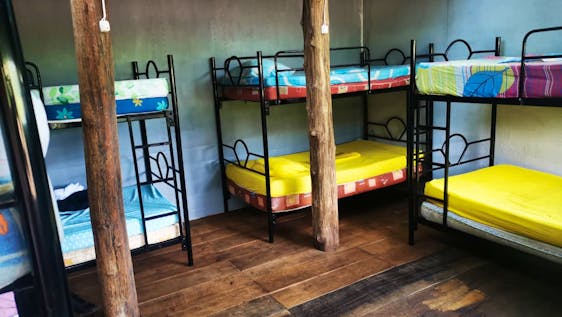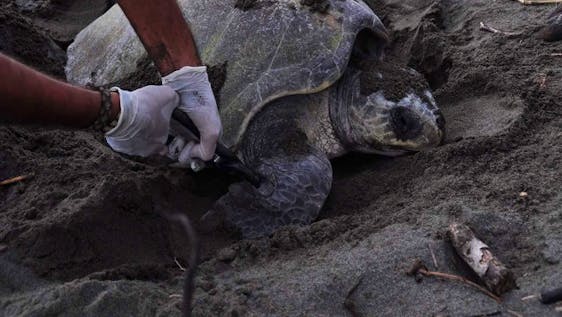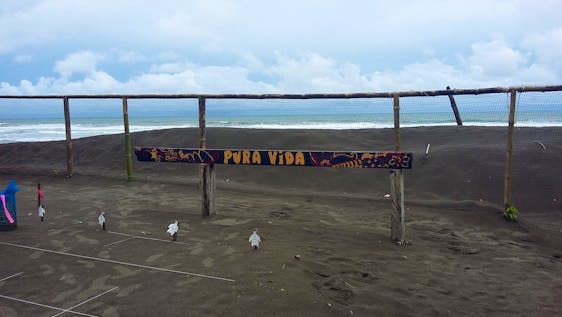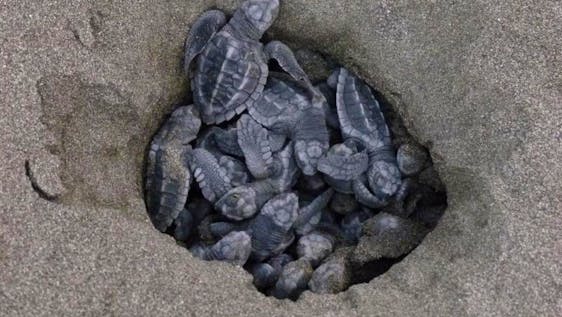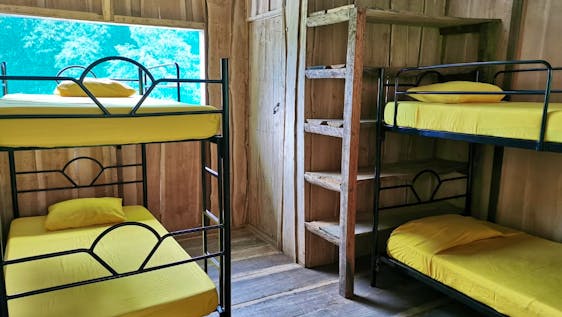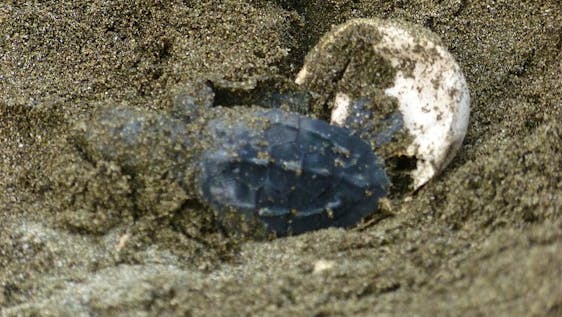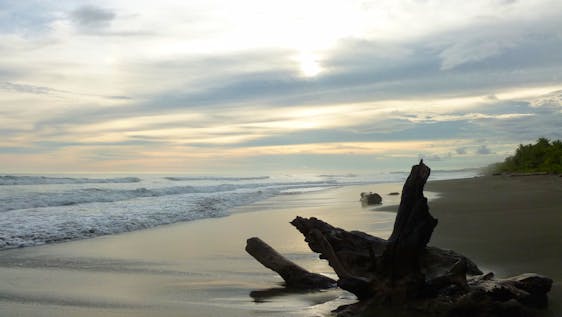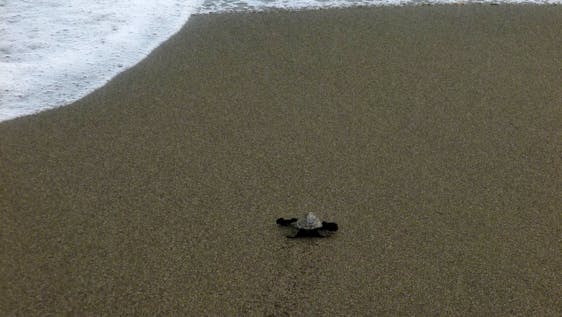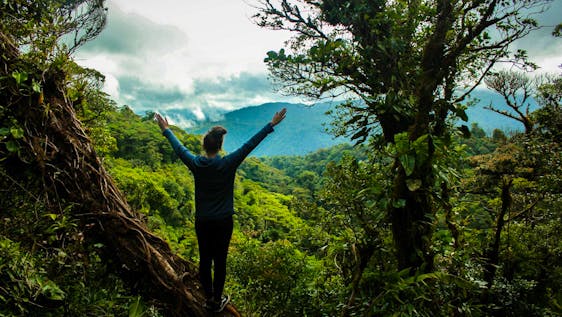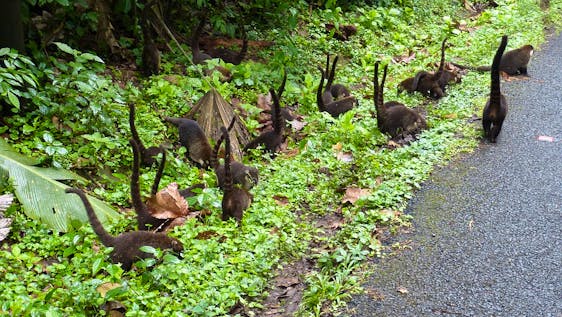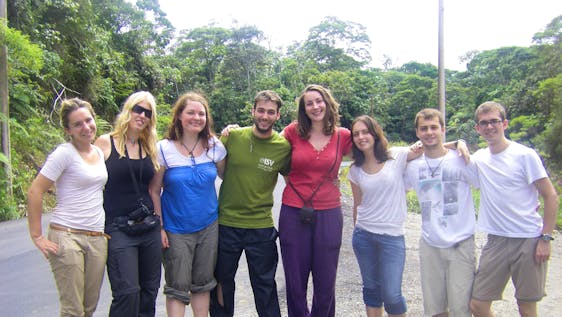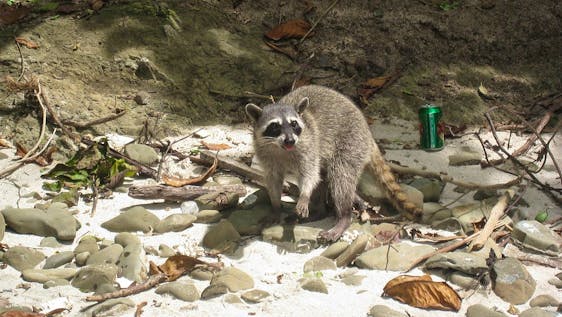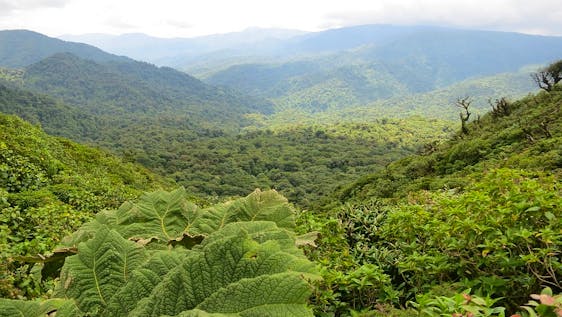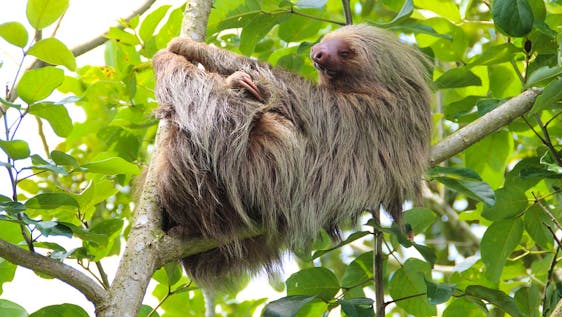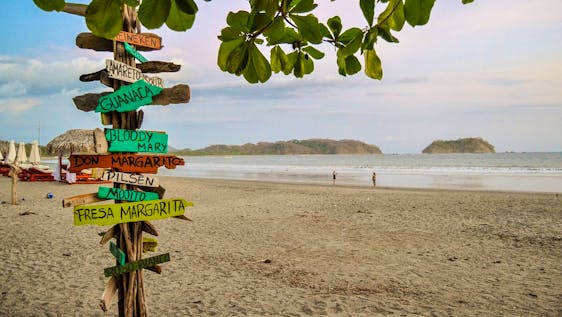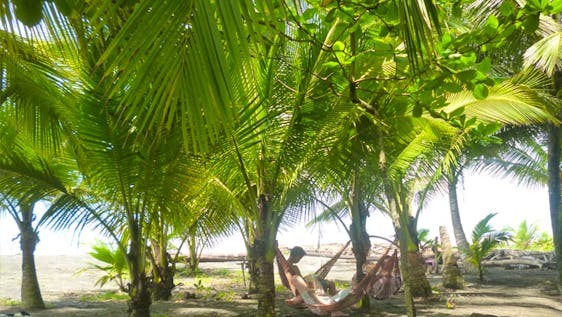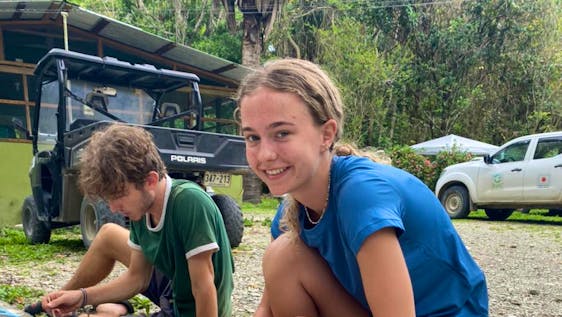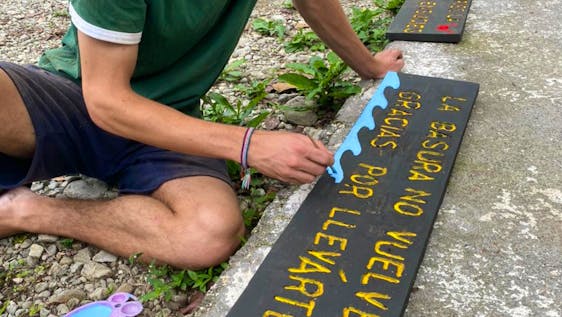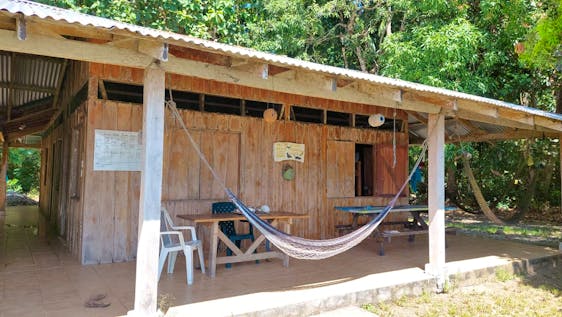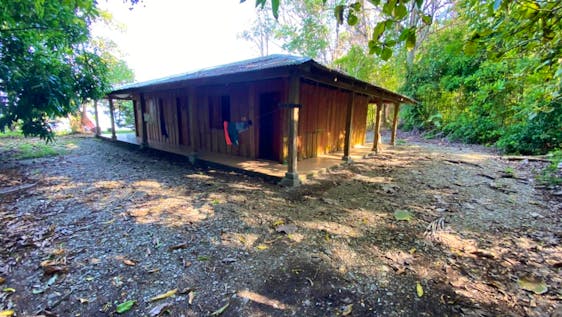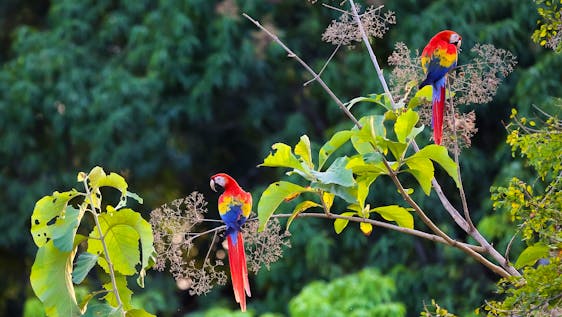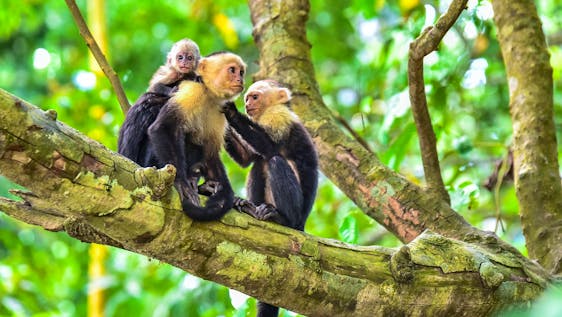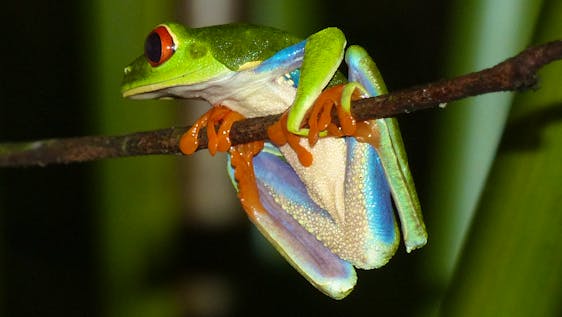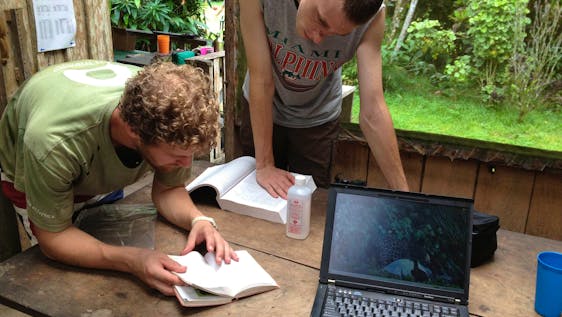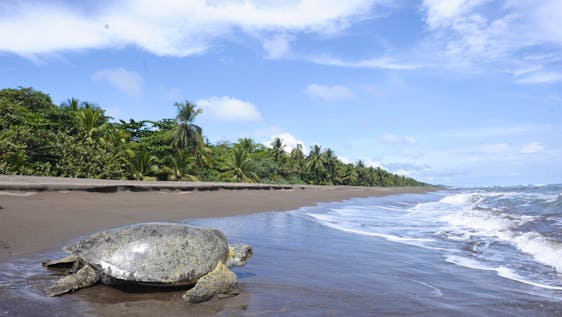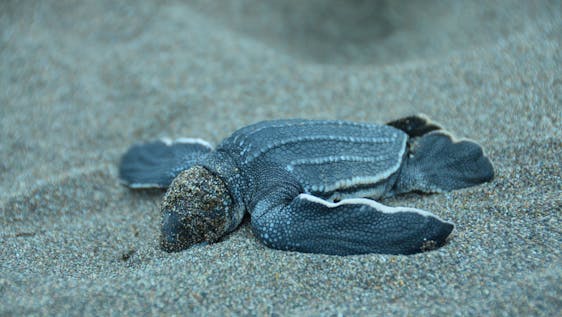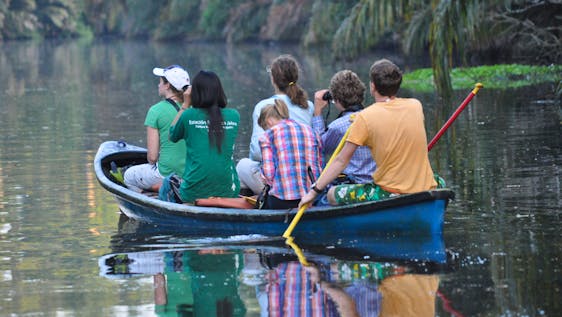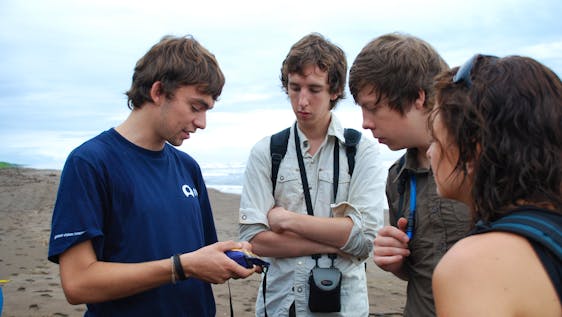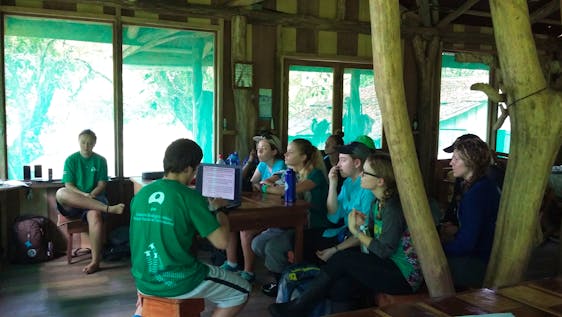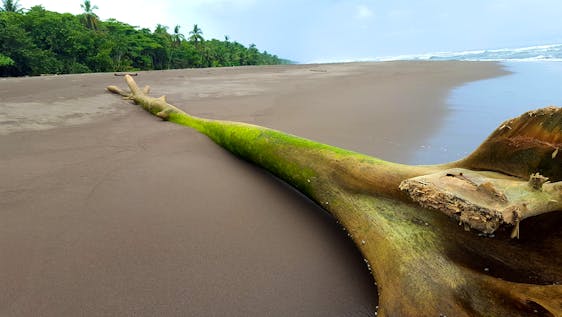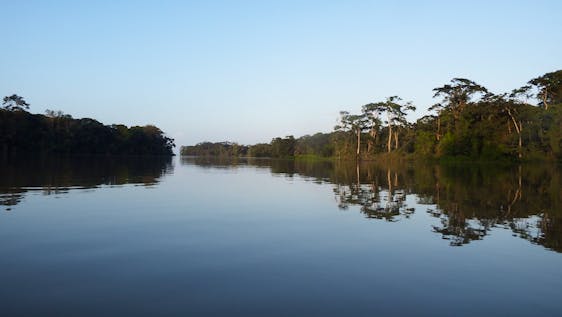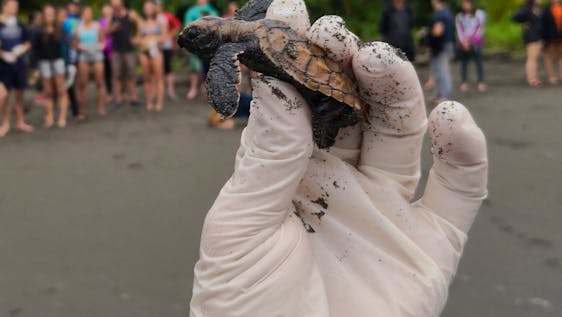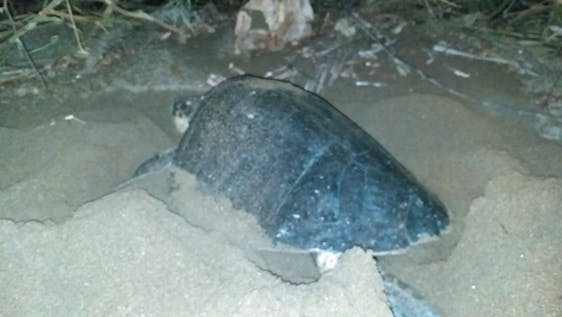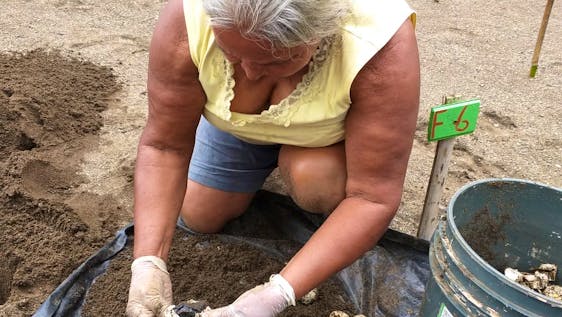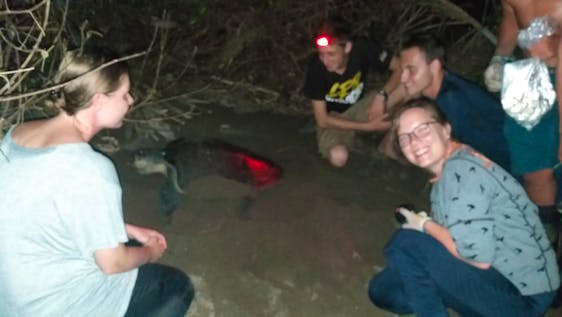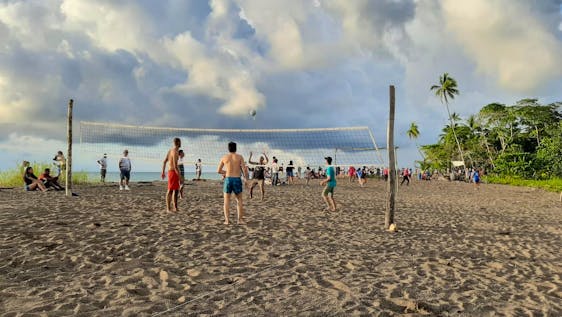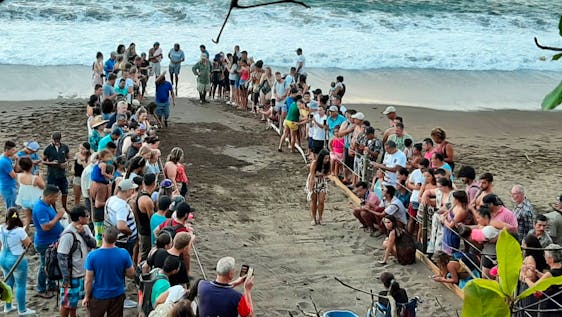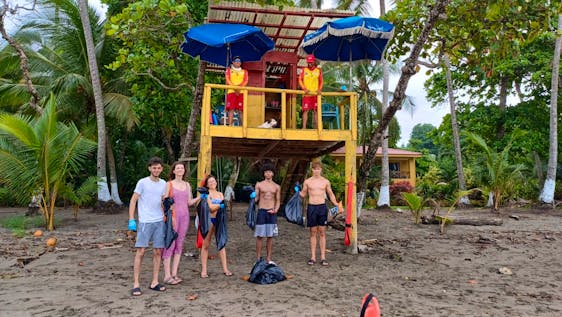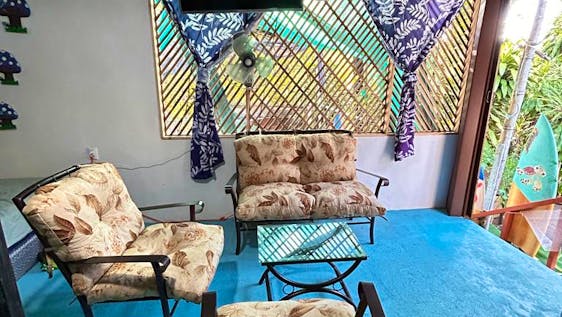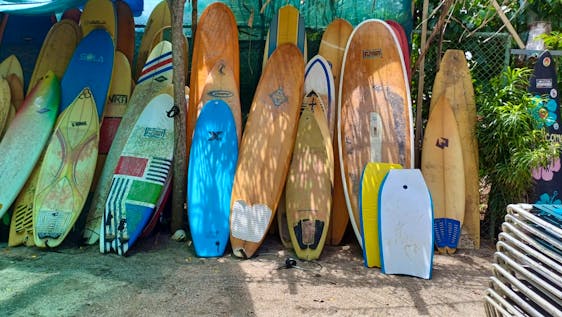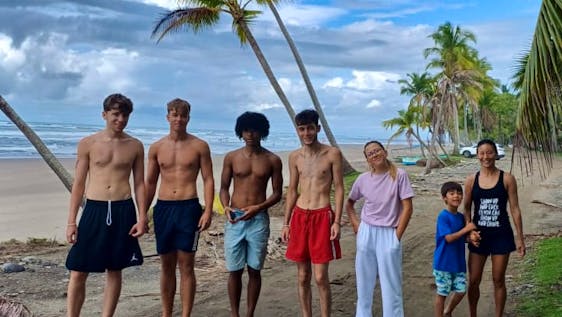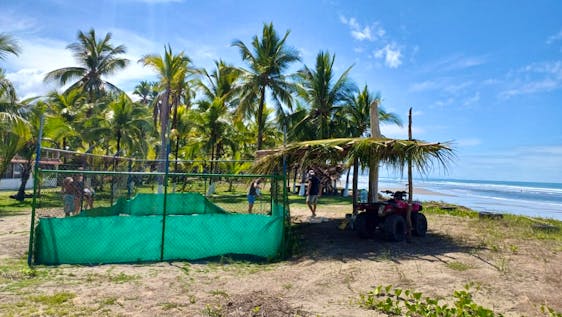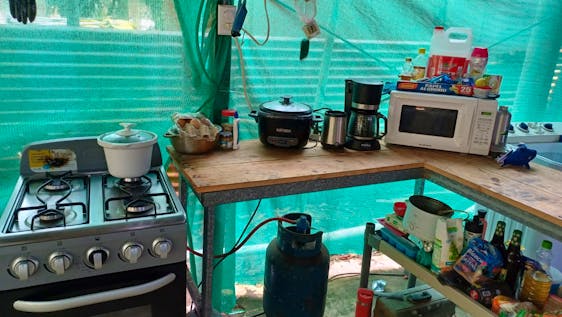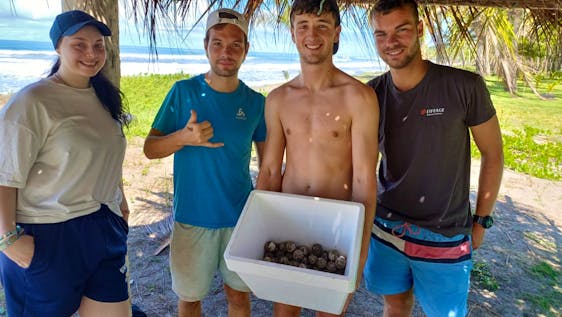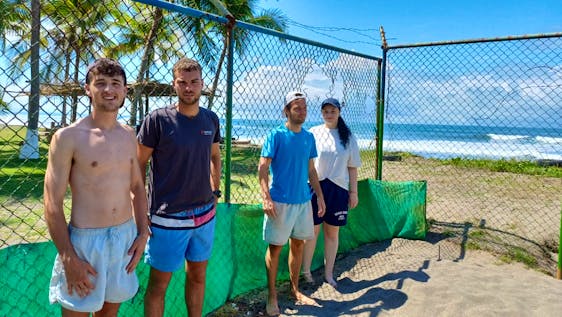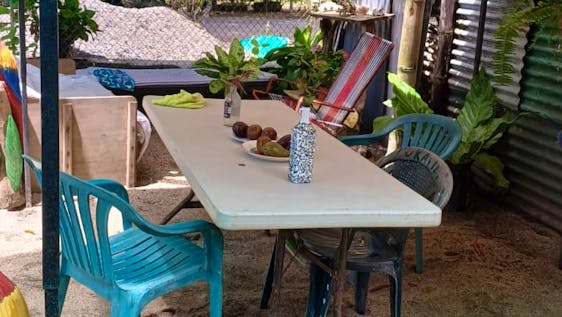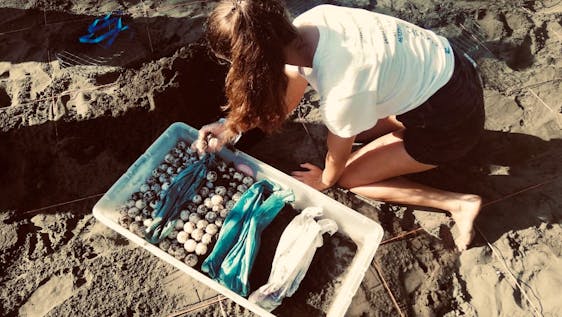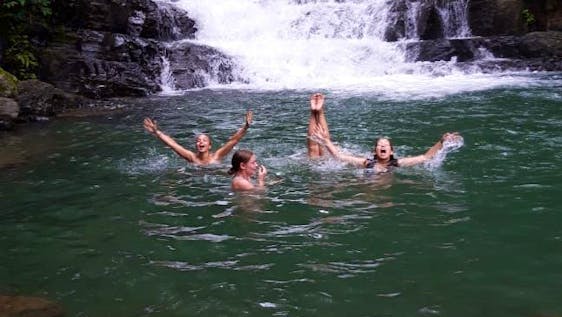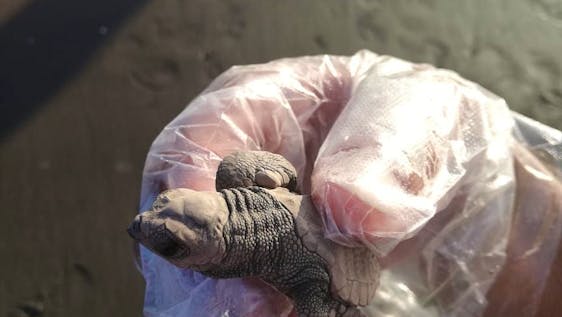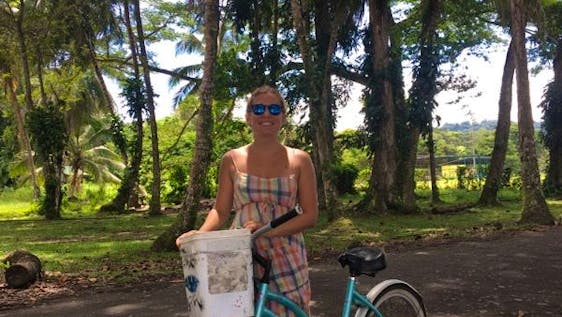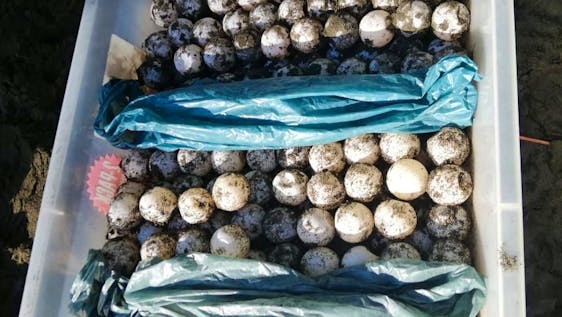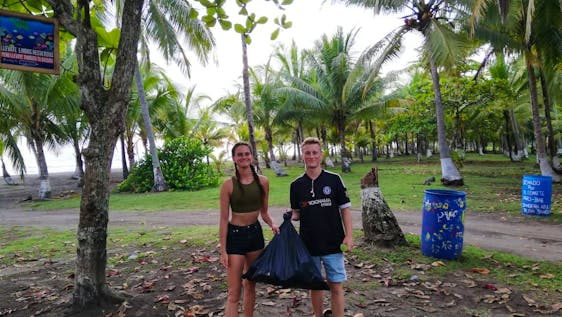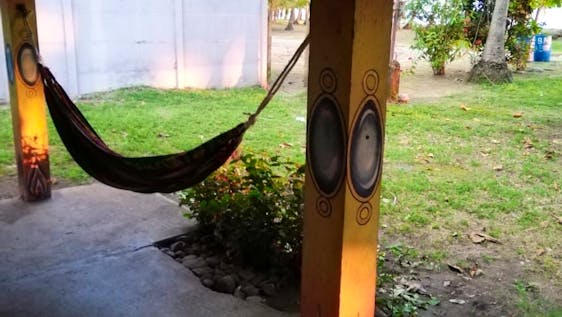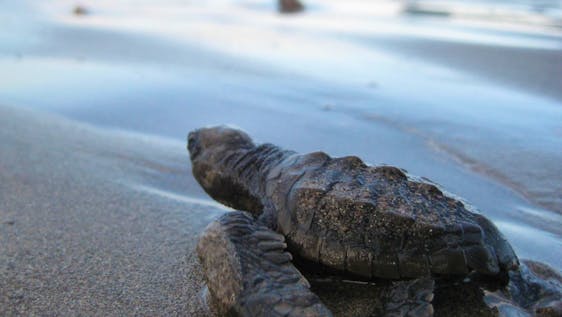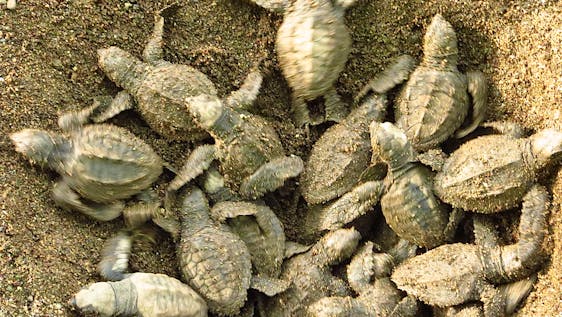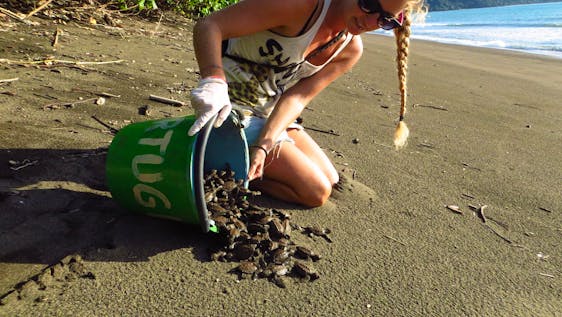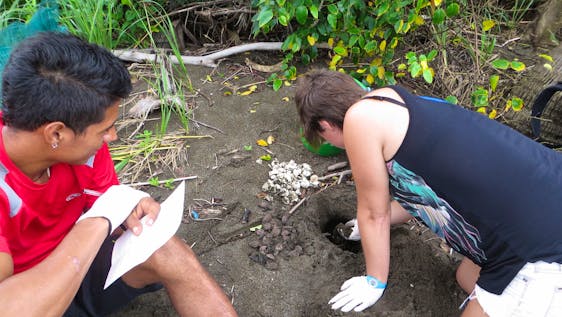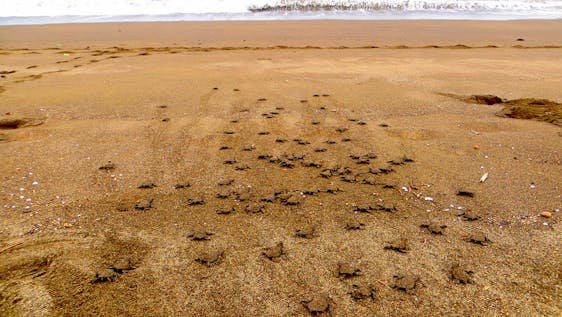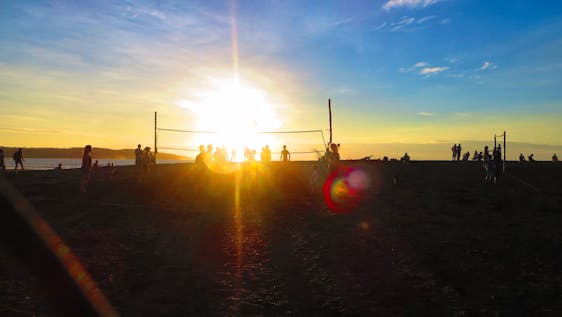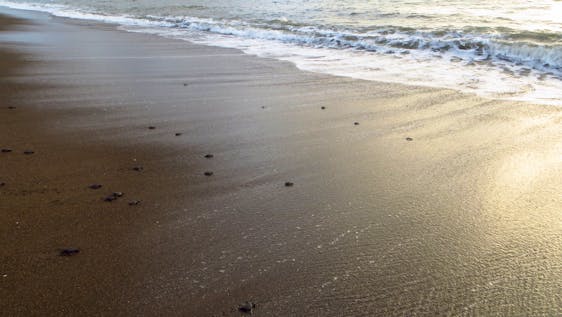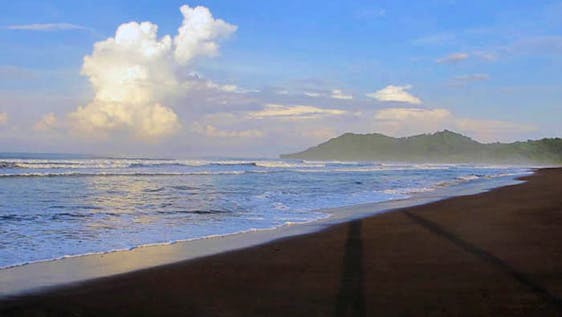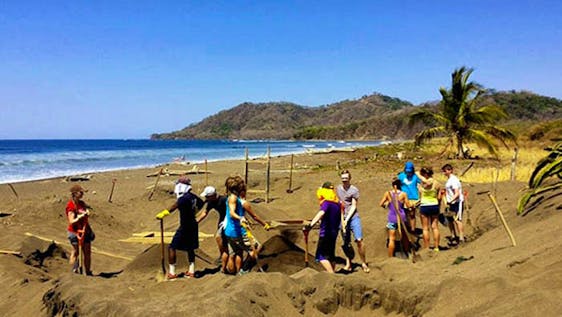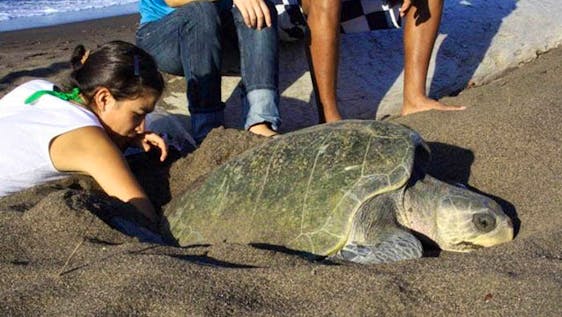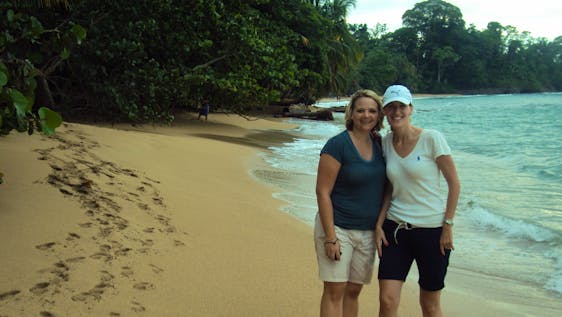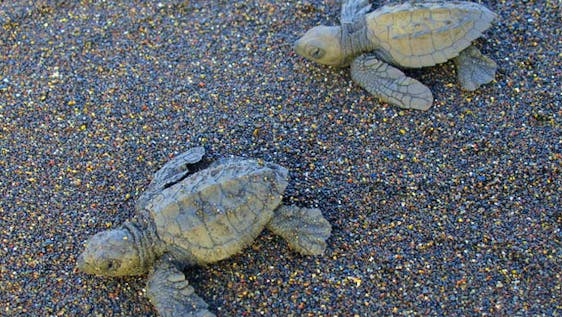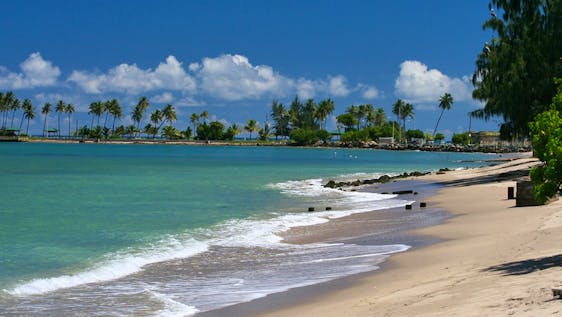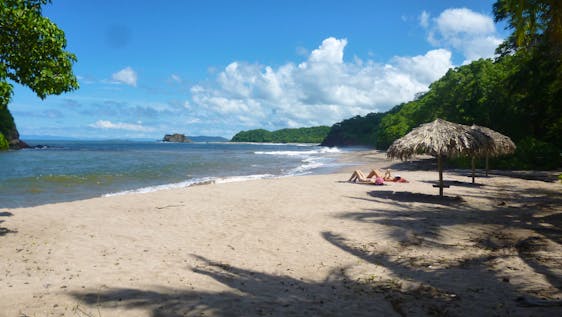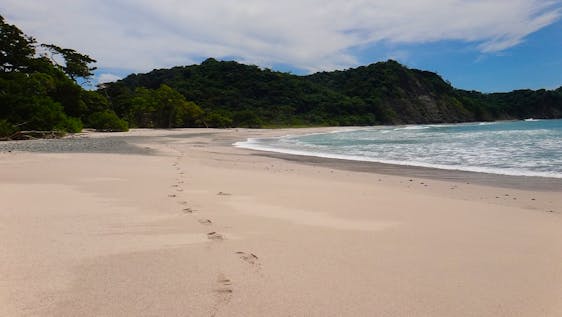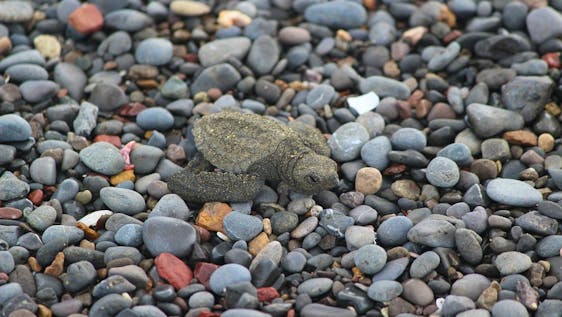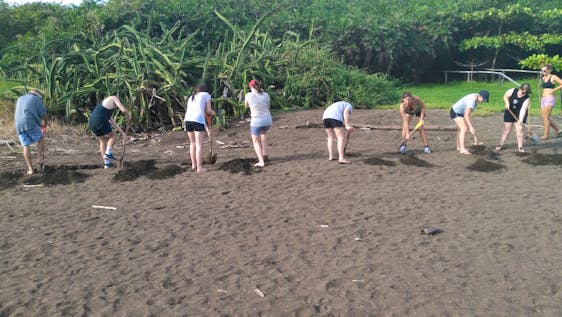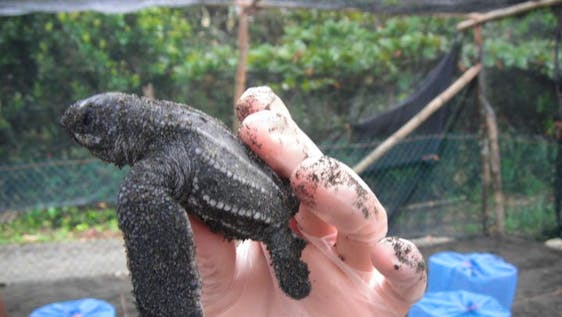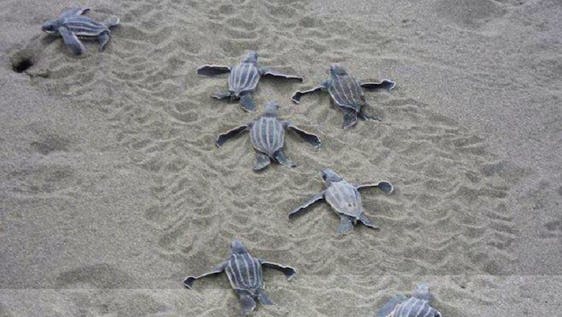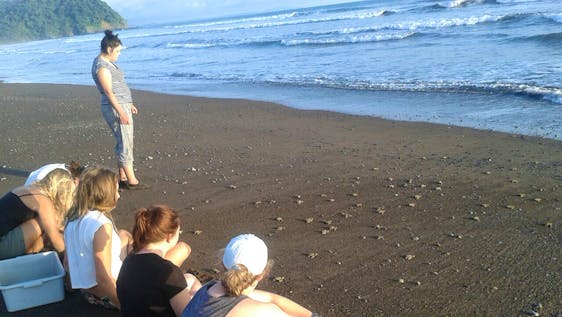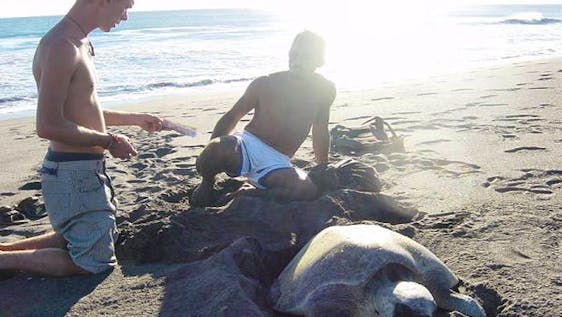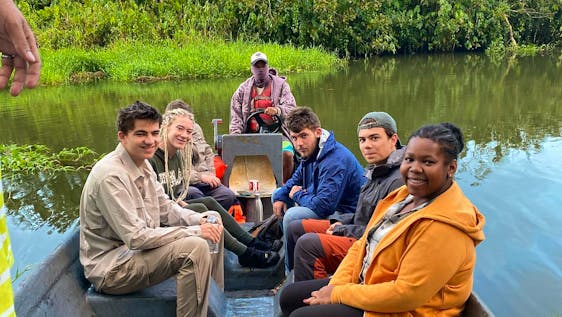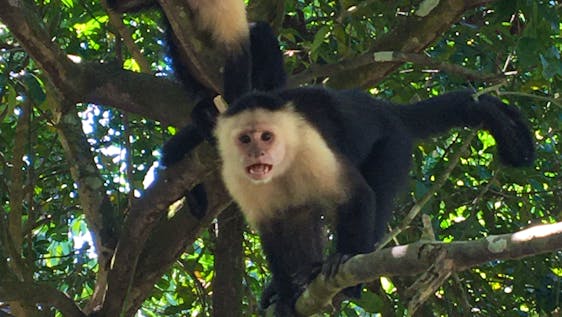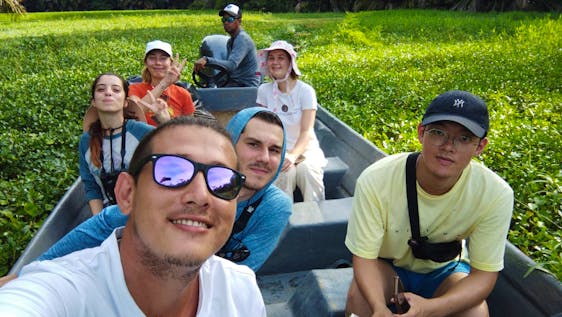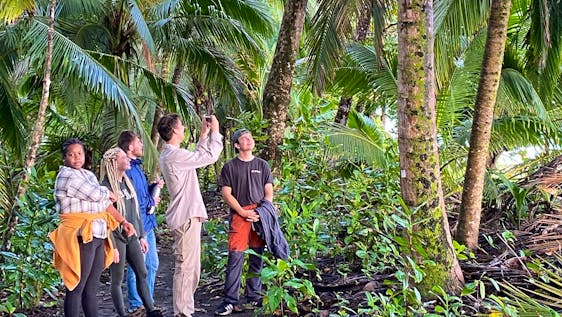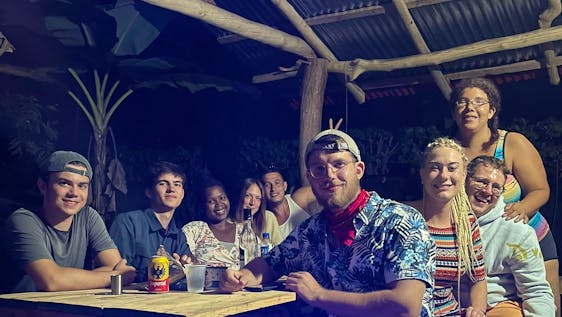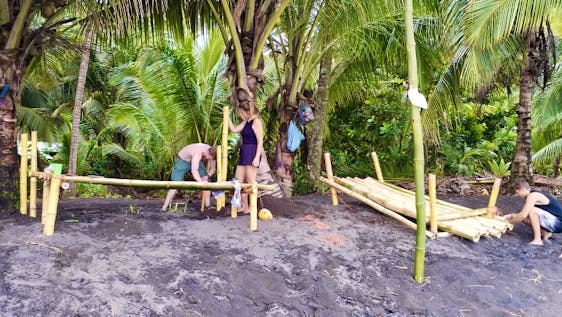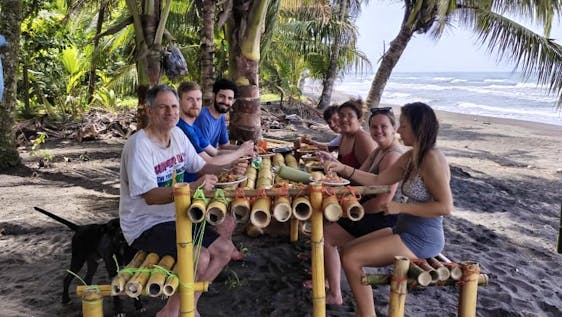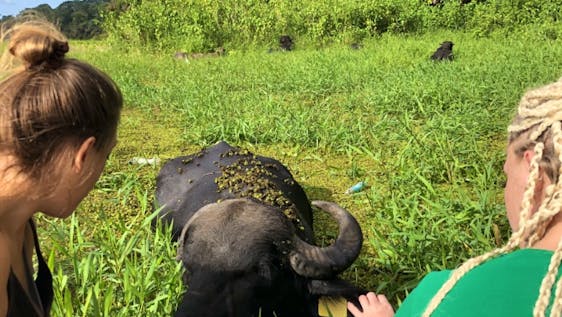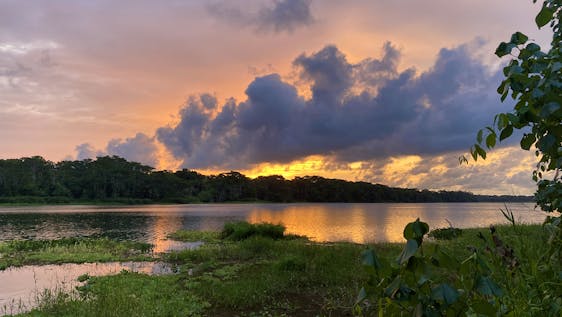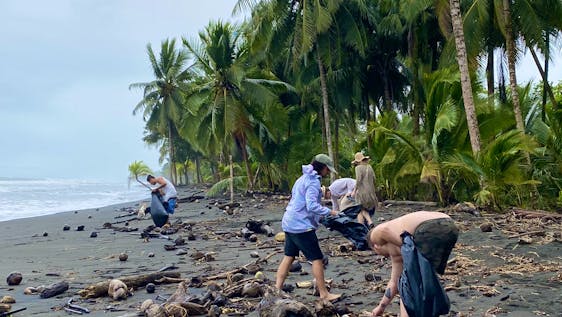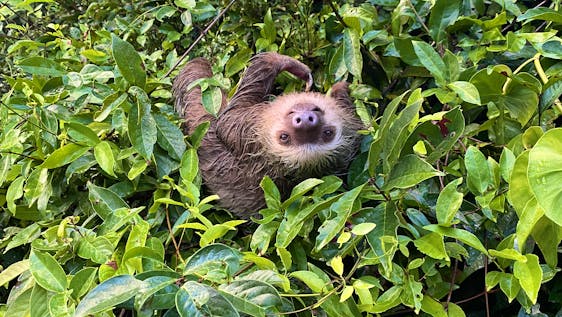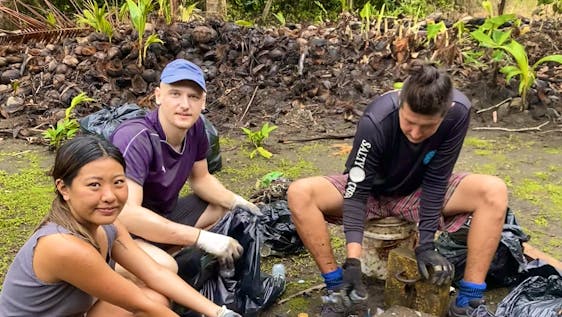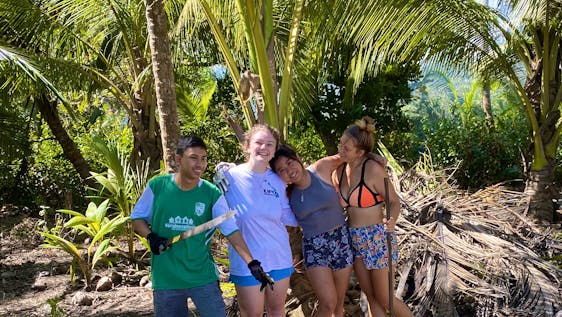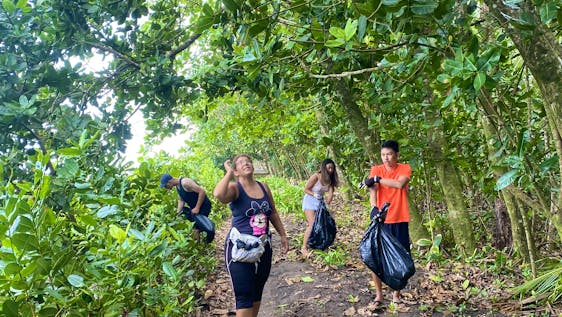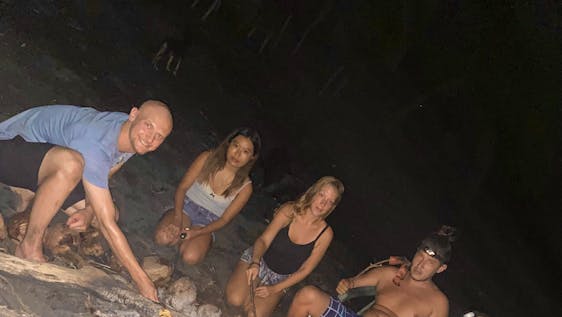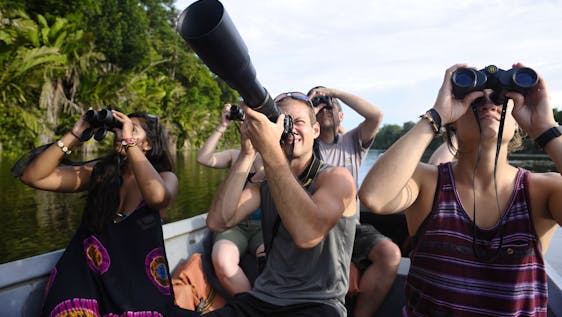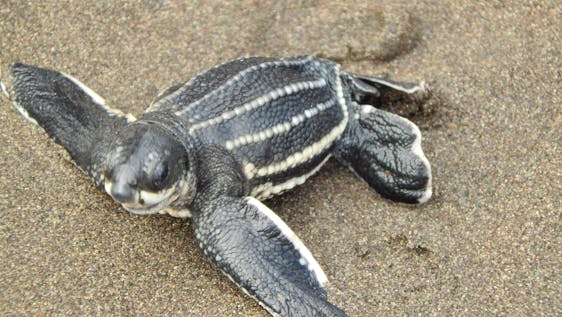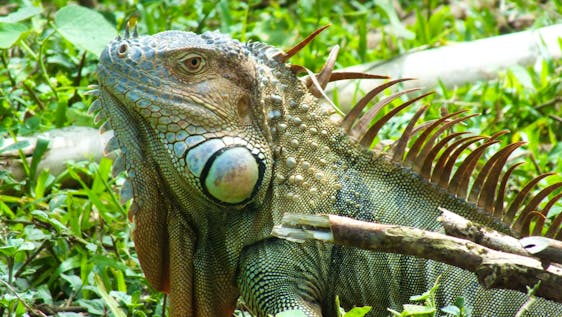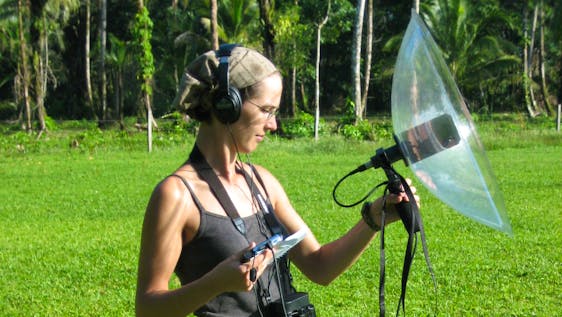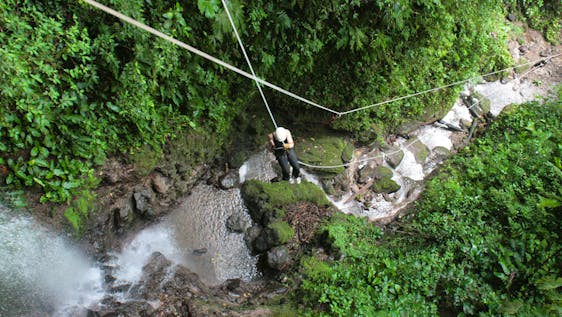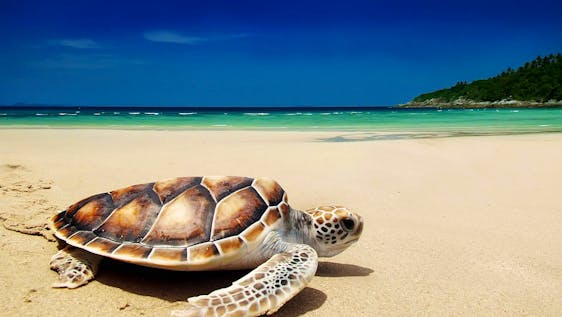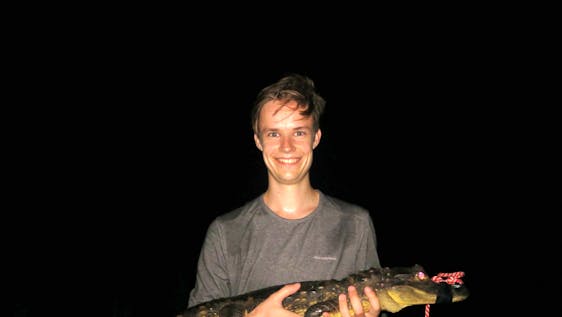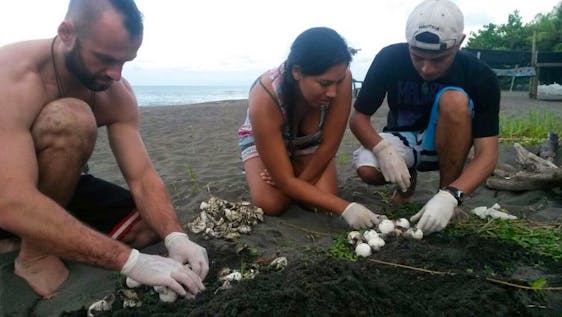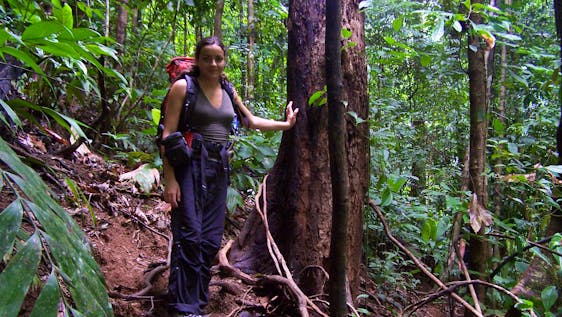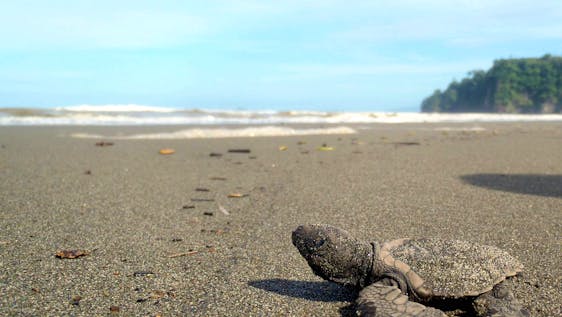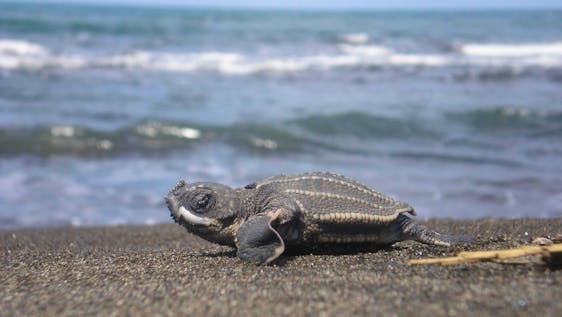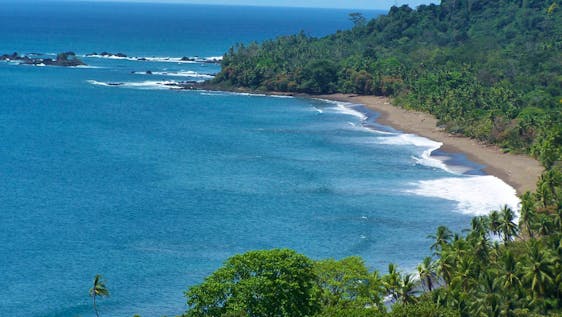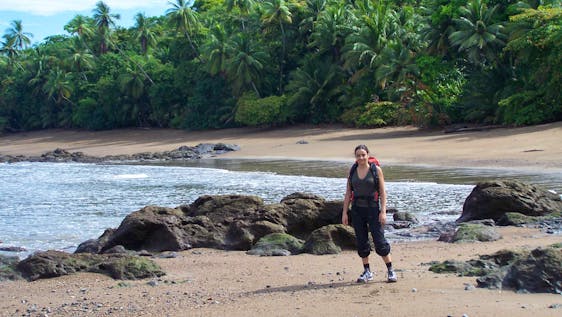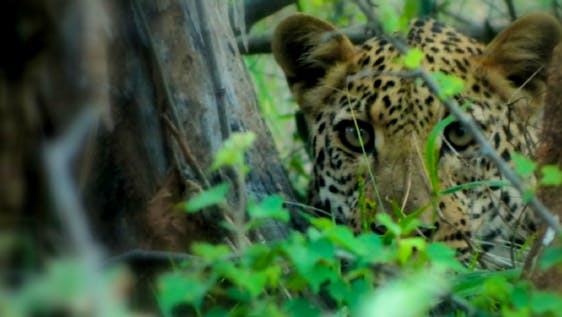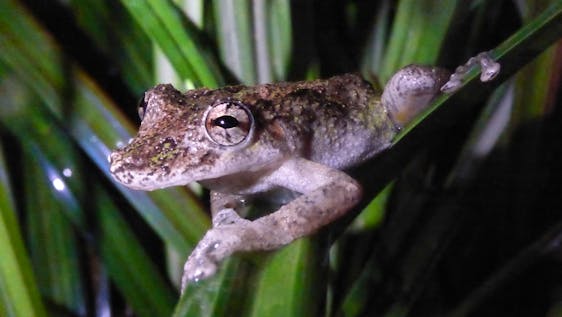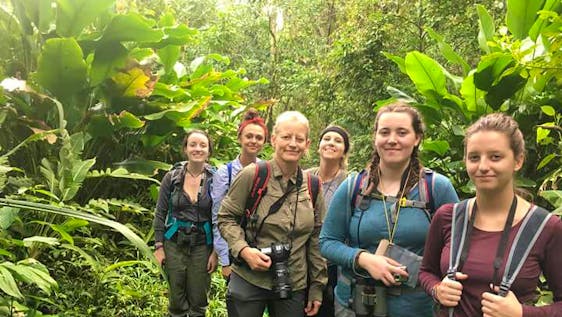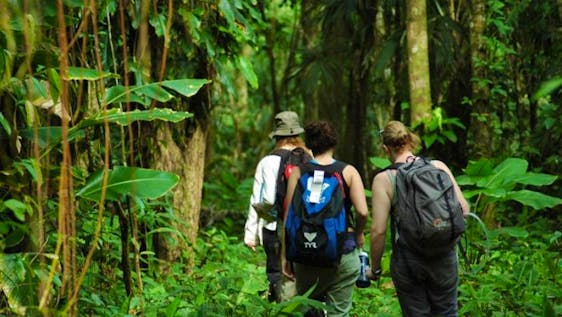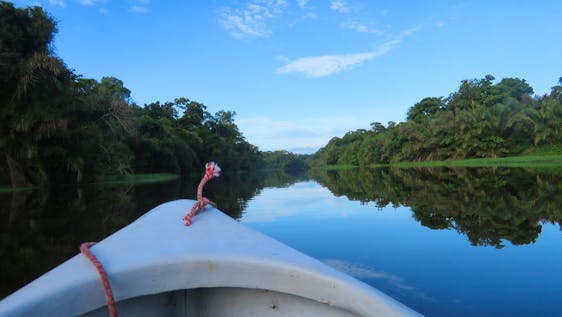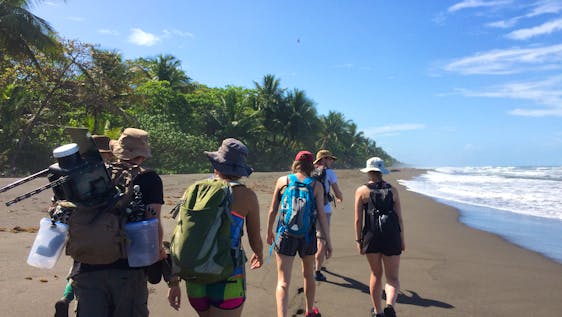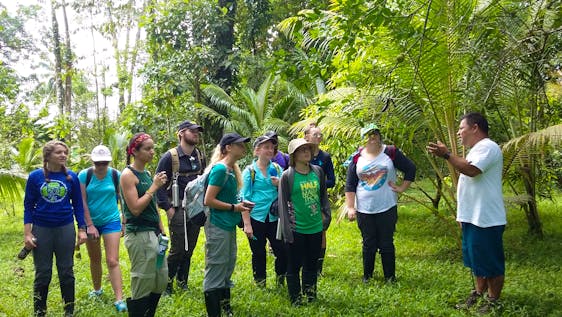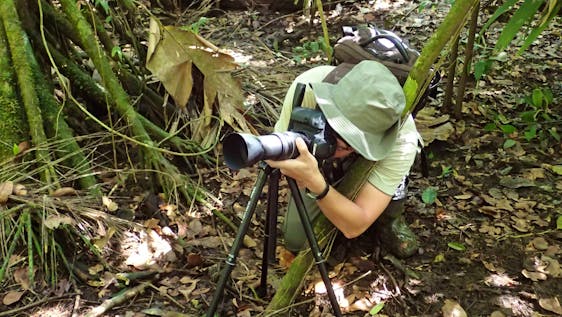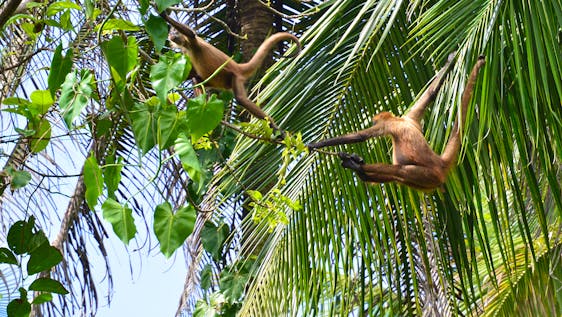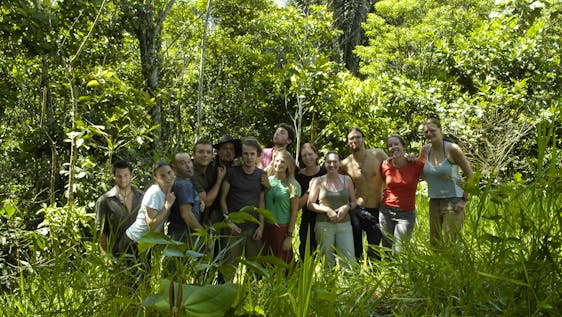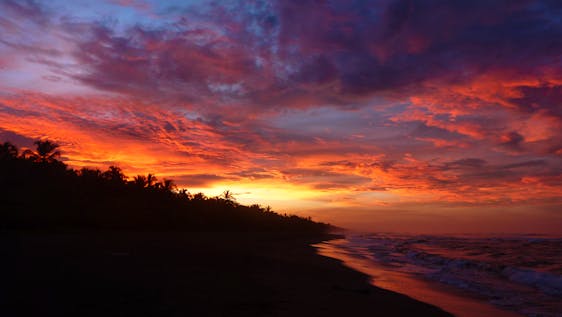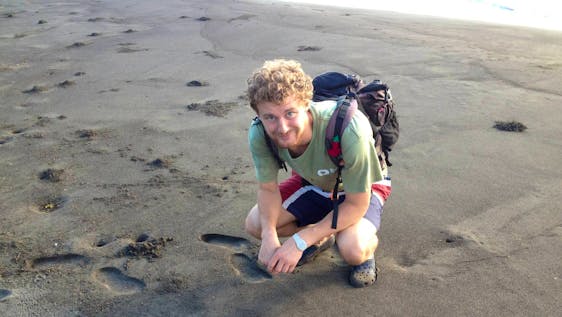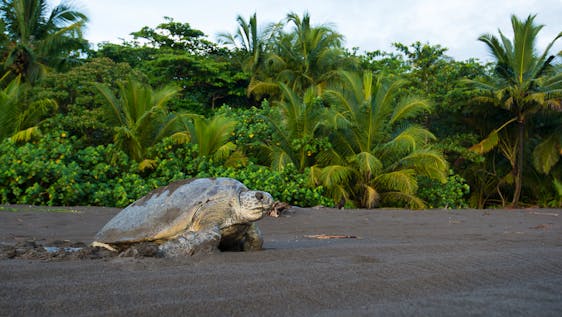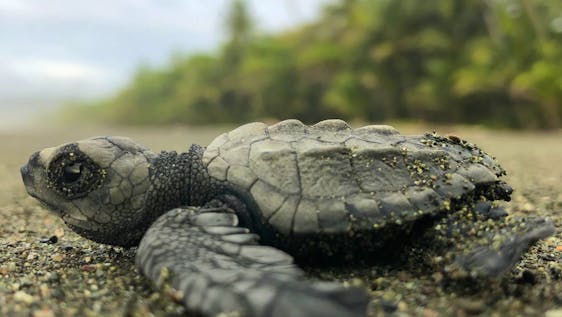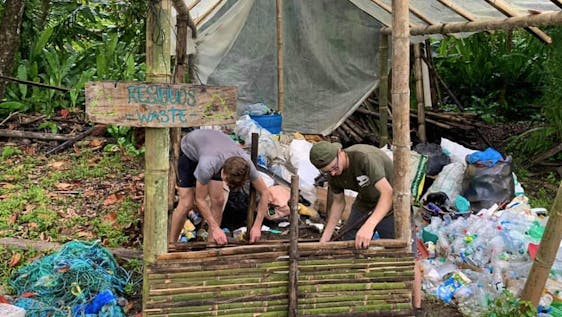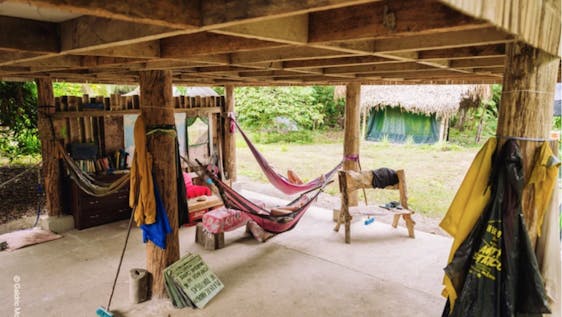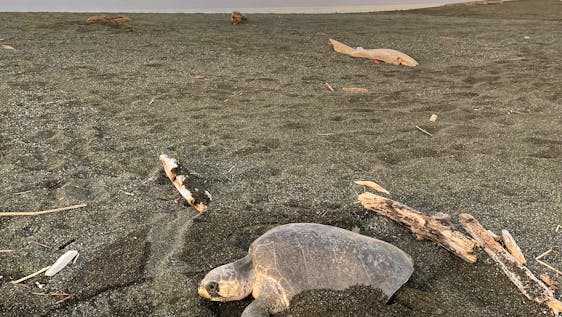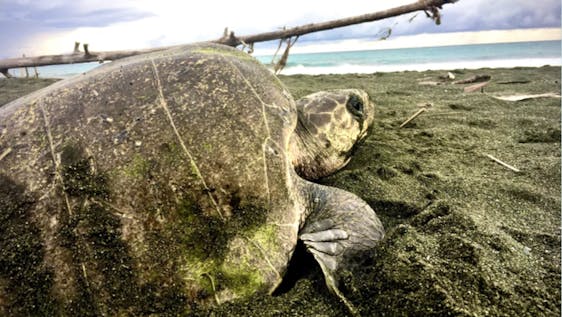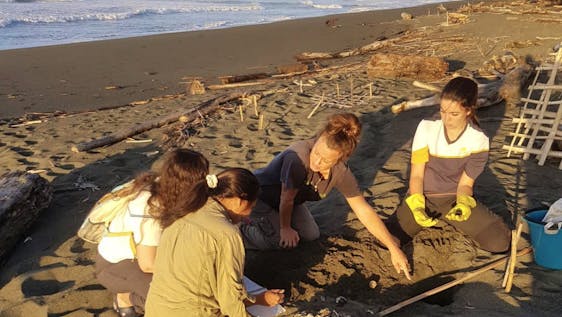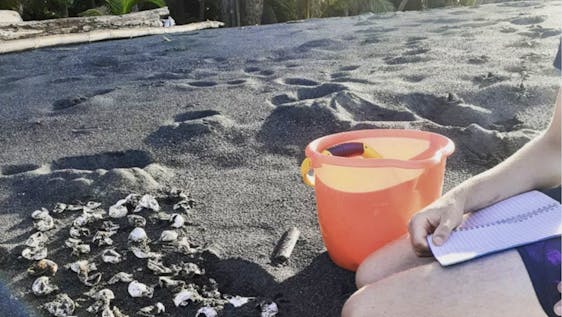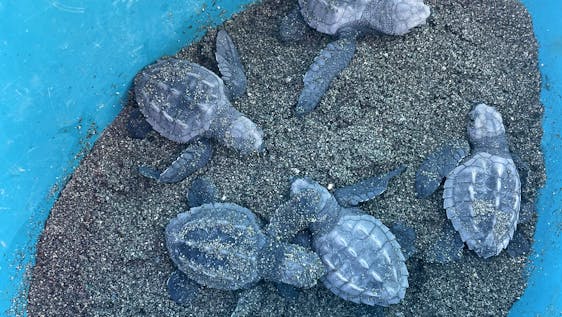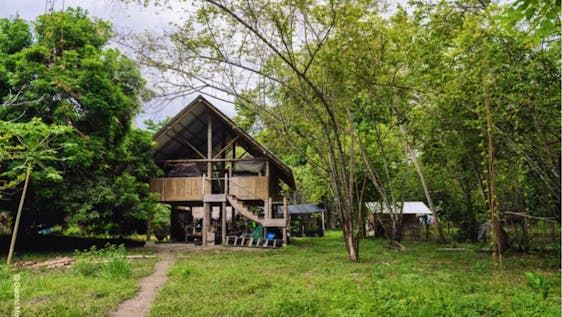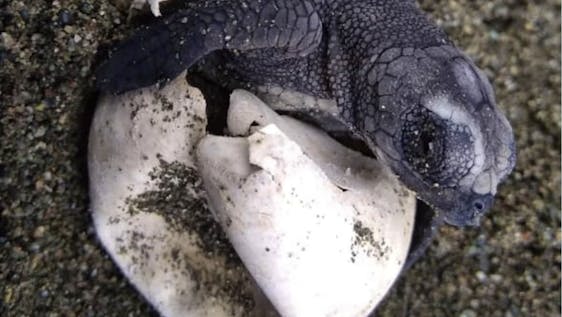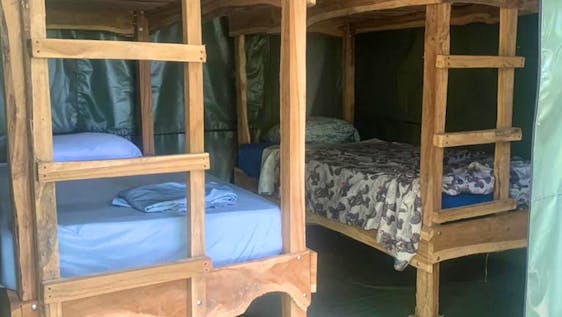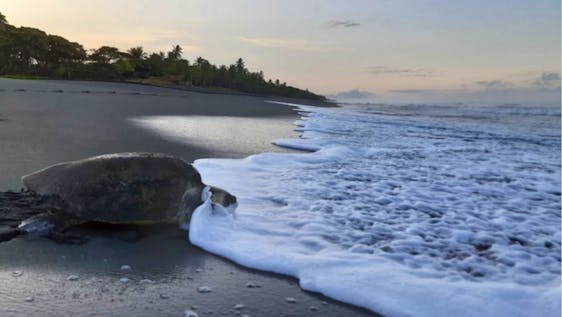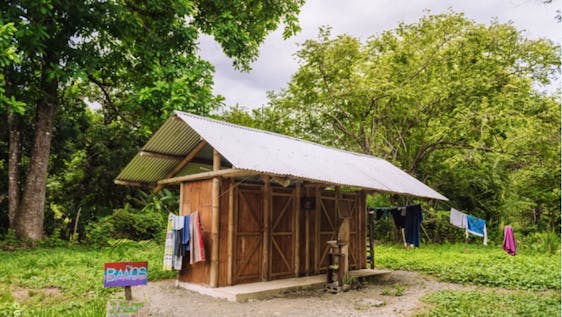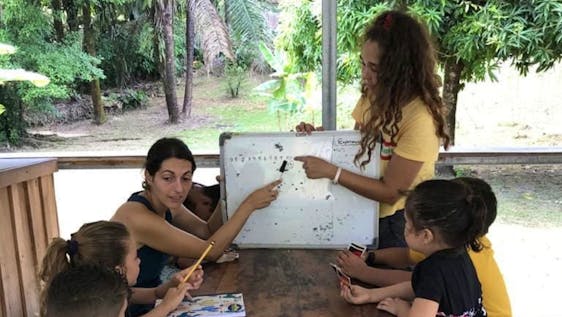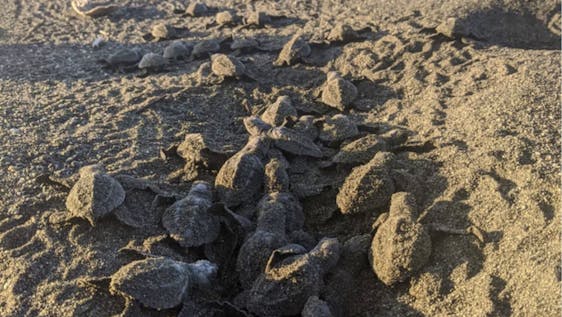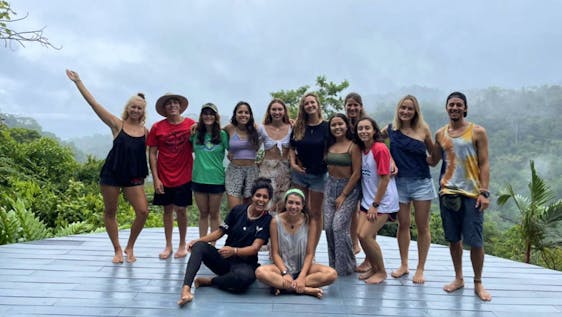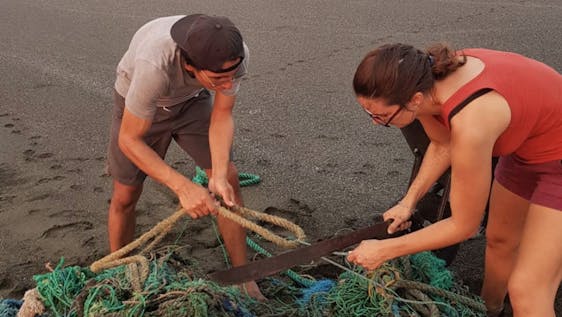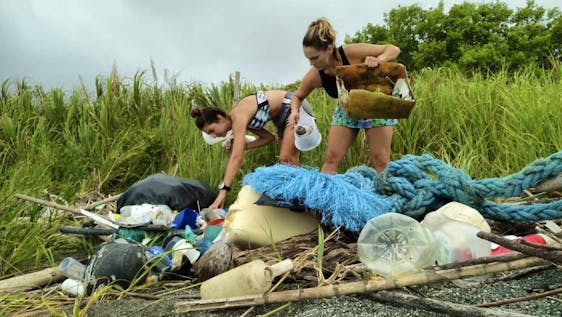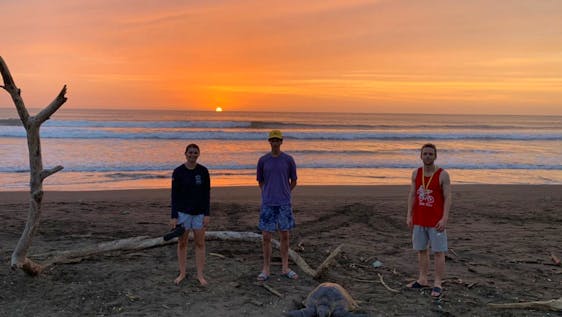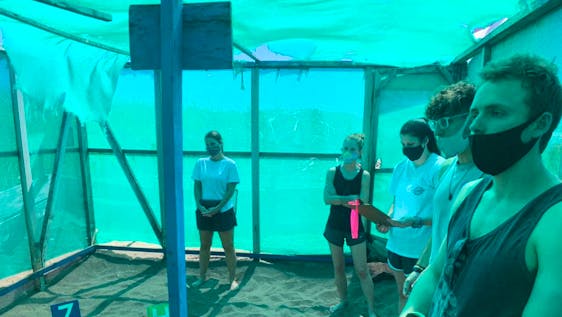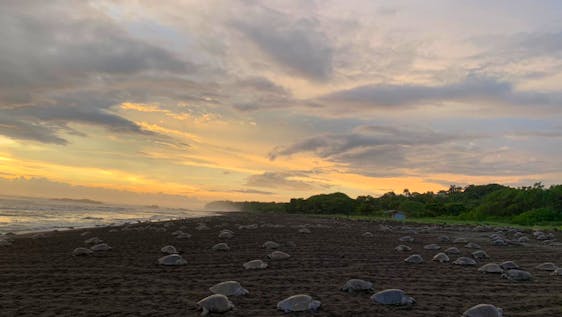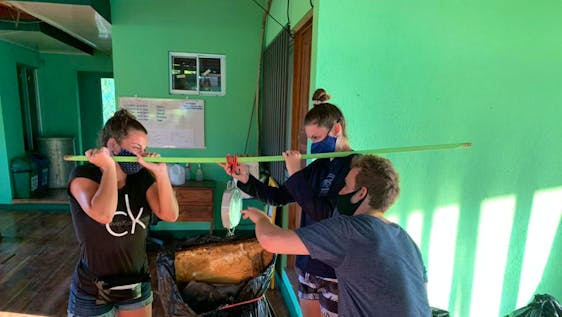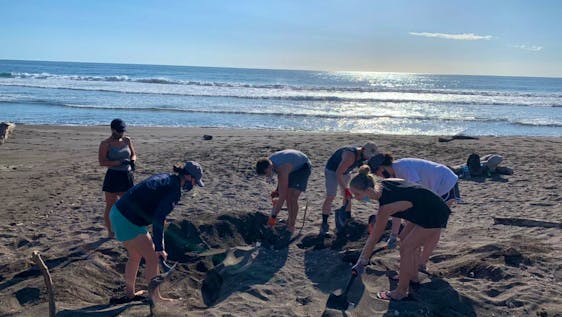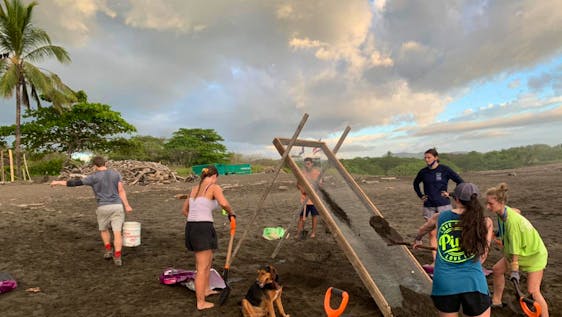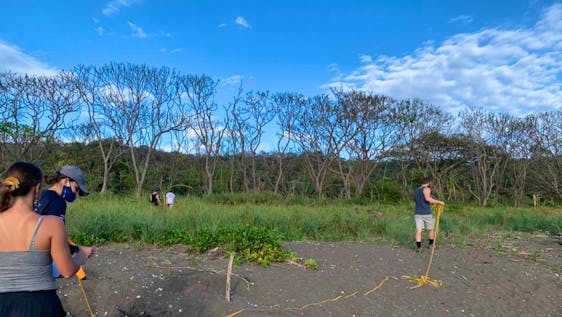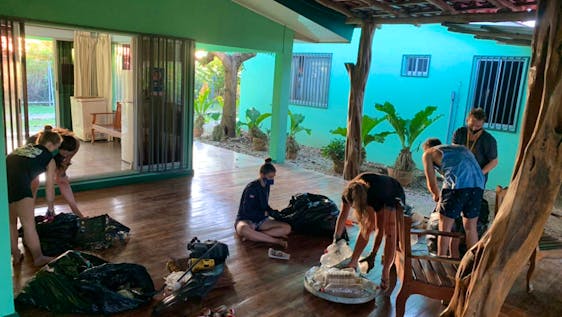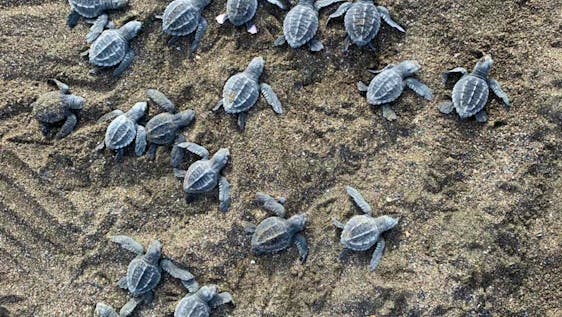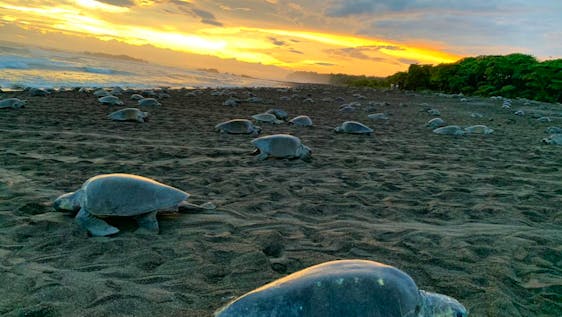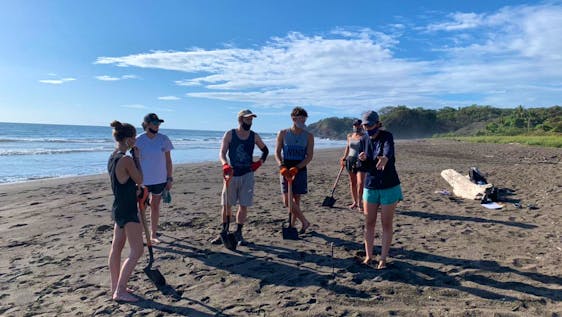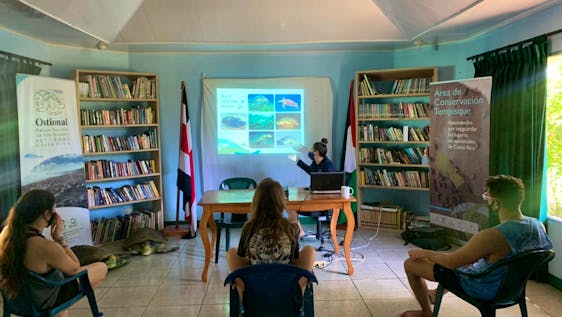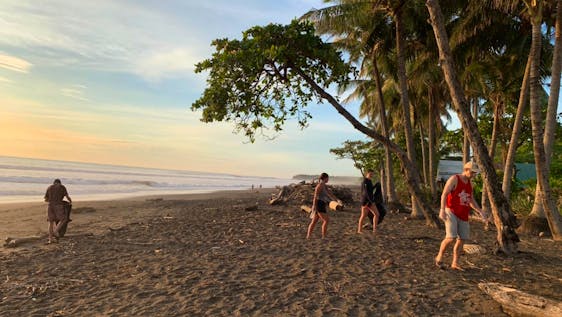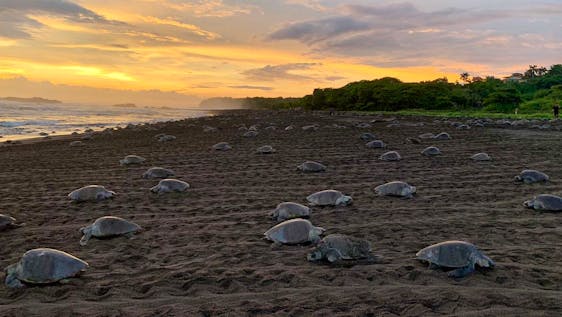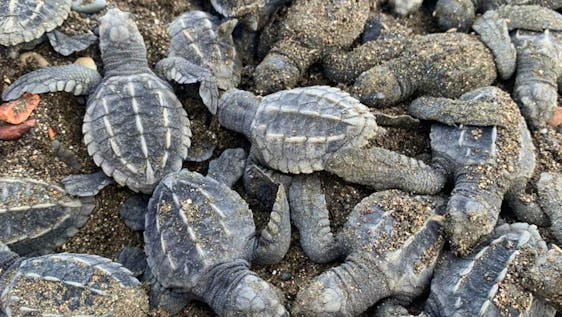Sea Turtle Volunteer in Costa Rica
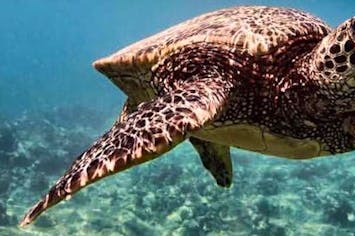
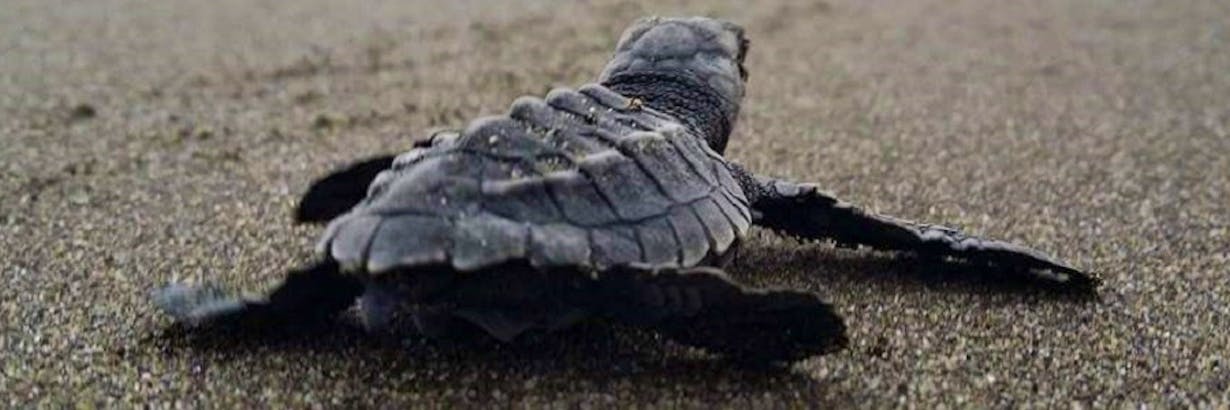
Volunteer for Sea Turtle Conservation in Costa Rica
A global biodiversity hotspot, Costa Rica boasts essential nesting sites for four of the world’s seven sea turtle species. Featuring two stunning coastlines – the Pacific in the West and the Caribbean in the East – this tiny Central American country attracts hundreds of thousands of endangered sea turtles ready to lay their eggs each year. Beach loving volunteers eager to experience this spectacular feat can help out by joining a sea turtle conservation program.
With over 25% of its land covered in National Parks and Reserves, Costa Rica is a true pioneer of environmental protection. Since all of the four sea turtle species gracing the country’s pristine waters and beaches are considered either vulnerable or endangered, turtle conservation is one of Costa Rica’s top priorities.
Given that these slow creatures are one of the main tourist attractions in Costa Rica, your time as a Costa Rica turtle volunteer at one of the conversation projects will not only benefit this marvelous reptile (yes, they belong to the class of reptiles!) but also help local communities, who can earn an income through ecotourism.
Travel and explore Costa Rica’s green jungle, dazzling beaches, and exotic wildlife while volunteering for a good cause – join a sea turtle conservation program!
🇨🇷 Why Volunteer for Sea Turtle Conservation in Costa Rica?
Whether it’s thousands of kilometers from shore in the open ocean or in coral reefs and seagrass beds near the coastline, sea turtles spend most of their lives in the ocean. However, each year females make the strenuous journey returning to the same beaches where they were born to lay their eggs.
Costa Rica’s expansive shores are home to dozens of nesting sites for four different sea turtle species:
- Leatherback turtles
- Green turtles
- Hawksbill turtles
- Olive ridley turtles
Sea turtles are extremely vulnerable because they risk being poached when they come to shore. Poachers will steal their eggs or kill them for their meat, skin, or shells. Their slow reproduction rate also contributes to their vulnerable status.
🐢 What are the Different Sea Turtle Species in Costa Rica?
Let’s dive into the differences between the species commonly found in beautiful Costa Rica!
Leatherback Turtle
These fascinating creatures are known for their immense size (up to 160cm and 680kg!) and their leather-like shell. These carnivores can be found snacking on jellyfish and salps in tropical, subtropical, and subpolar seas around the world. However, over the past 90 years, the global population of this species shrunk by an estimated 40% and their number keeps decreasing. That's why today, this species is classified as vulnerable. In Costa Rica, you can witness leatherbacks nesting on the Pacific coast from September to March and on the Caribbean coast from March to July. Try catching a glimpse while they are on land - you likely won’t see them in the water as they dive down to over 1000m below sea level.
Green Sea Turtle
Unlike the leatherback turtle, these marine animals are named for the color of their fat and cartilage, not their shell. In fact, in some locations, their shell may appear completely black. Green turtles can grow up to 120cm and weigh over 180kg, which is quite massive considering these herbivores only graze on seagrass and algae. Mainly navigating tropical and subtropical waters, this species can be found on Costa Rica’s Caribbean coast from June to October. Tortuguero National Park in Costa Rica also happens to be one of the green turtles’ most important nesting sites in the Western Hemisphere.
Sadly, the global population has declined an estimated 60% over the past three generations. Nowadays, this species is considered an endangered species and conservation efforts and Costa Rica sea turtle volunteers are vital to prevent extinction.
Hawksbill Turtle
Since 1996 this turtle, known for its hawkish beak and colorful shell, is on the critically endangered species list. With an average adult size of 89cm, hawksbills are much smaller than their green relatives. Hawksbills mostly live in coral reefs and feed on sponges, sea anemones, and jellyfish. This turtle species is rarely seen due to declining numbers but can be found nesting on Costa Rica’s Caribbean beaches around September and October.
Olive Ridley Turtle
The olive ridley turtle gets its name from its olive-colored shell. With adult turtles reaching a maximum size of 70cm, this is the smallest species commonly found in Costa Rica. This species is famous for its annual “arribada”, a so-called mass nesting, where hundreds of thousands of females emerge from the ocean around the same time to lay their first eggs of the nesting season. Costa Rica is one of the few places where you may have the chance to witness this turtle spectacle.
Since this species only nest in few locations around the globe, they are considered vulnerable – one destroyed nesting site could have serious consequences for the whole population. That’s why volunteering in turtle conservation and habitat protection in Costa Rica is crucial.
⚡ Why are Sea Turtles in Costa Rica Endangered?
There are many factors putting sea turtles in Costa Rica at risk – both natural and man-made. First, one has to consider that this marine species has an extremely slow reproduction rate. Leatherbacks, for example, may take up to 16 years until they reach sexual maturity. However, only one out of 1000 hatchlings even survive until adulthood. The rest is either eaten by natural predators like dogs and raccoons or falls victim to one of the following man-made threats:
- Illegal poaching
- Egg Collection
- Habitat destruction
- Fisheries bycatch
- Plastics Pollution
- Climate Change
Illegal Poaching
Over the past decades, millions of sea turtles have been poached for their shells, their meat, or their spiritual significance. Nowadays, they are protected by international law but the illegal killing around the world continues.
Although Costa Rica’s government already transformed many nesting sites into protected areas, there are still hunters managing to capture turtles for trade and fishermen using turtle meat for bait.
Egg Collection
In Costa Rica, turtle eggs are considered a delicacy. They can provide local families with both, food and income. With dwindling numbers of sea turtles, the government now enforces a strict ban on turtle egg collection. So-called turtle hatcheries set up close to nesting sites are helping to guard eggs and prevent exploitation.
However, there is one (rather controversial) exception to Costa Rica’s turtle egg harvesting ban. A few beaches in Ostional are known for the before mentioned “arribadas” of olive ridley turtles. Since environmental scientists found that succeeding waves of females coming ashore to build their nests actually crush or contaminate up to 90% of the previously laid eggs, the Costa Rican government allows locals to harvest 1% of the turtle eggs for consumption and trade. Although strict rules apply to this exception, people, of course, find loopholes in the system and use this occasion to illegally exploit more eggs.
Habitat Destruction
Tourism is good for Costa Rica’s economy. However, unsustainable development of tropical coastlines often destroys nesting habitats. Even if nesting sites stay intact, human actions on the beaches (for example, bonfires) can destroy turtle nests. Since Costa Rica has two expansive coastlines with lots of nesting sites for turtles, it’s difficult for volunteering projects to protect every site with the same resources.
Furthermore, coral reefs, which provide a feeding ground for many turtle species, are dying due to pollution, overfishing, mining, and global warming. Costa Rica is no exception: Its coral reefs on both, Pacific and Caribbean side, eg. around Osa, have been seriously damaged over the past 30 years. The government and other organizations and projects are now working to restore the reefs and bring them back to health.
Fisheries Bycatch
Each year, hundreds of thousands of sea turtles are accidentally caught by fishermen using trawl nets, gillnets, or longline hooks. When entangled in fishing nets, the animals often can’t reach the surface to breathe and drown.
Since the marine animals may travel thousands of kilometers between nesting and feeding grounds, fisheries around the world – not only in Costa Rica – have to adapt to more turtle-friendly fishing hooks and nets and learn how to save animals caught in fishing gear.
Plastics Pollution
With global plastic recycling rates of only 25%, each year millions of tons of our plastic waste ends up in the ocean. The United Nations estimates that by 2050, the ocean will contain more plastics than fish. Why is that a problem?
Despite the unattractive sight for snorkelers, divers, and beach visitors, plastic waste also puts the ocean’s residents at risk. Plastics take hundreds of years to decompose (eg. 450 years for one plastic bottle!), so once these items are in the ocean, they stay there for a long time. Marine animals mistake floating plastics for food and ingest it. Sea turtles, for example, often mistake plastic bags for jellyfish and swallow them. This can result in deadly consequences.
In Costa Rica, about 20% of the 4000 tons of the daily produced waste ends up in rivers and coastal zones. That’s why fighting plastics pollution is one of the country’s priorities. The government is working to find more sustainable alternatives to single-use plastics (straws, cutlery, bags, etc.). These single-use plastics were officially banned in April 2024. Costa Rica, furthermore, wants to introduce renewable materials that decompose in the ocean within six months and thereby save marine species like turtles.
Climate Change
We’ve heard all about how climate change is changing our world. But how does it affect turtles?
Turtles are incredibly dependent on their natural environment so global warming has serious implications for all turtle species. Rising sea levels and erratic storms can destroy nests and nesting sites. Warmer water temperatures can lead to massive coral bleaching, destroying turtles’ feeding grounds permanently.
Interestingly enough, even the animals’ gender is determined by temperature. Higher temperatures in the nest result in more female hatchlings, putting sex ratios out of balance.
❗ Why is Sea Turtle Conservation in Costa Rica Important?
Sea turtles are an important part of a healthy marine ecosystem. Leatherbacks, for example, feed on large numbers of jellyfish and keep jellyfish populations in check. Green turtles, on the other hand, consume seagrass and algae making the plants more productive. Hawksbills eat sponges and save coral reefs from competition.
Furthermore, sea turtles attract millions of nature lovers from around the world, providing alternative sources of income for locals in Costa Rica. As you can see, sea turtle conservation programs benefit both people and the planet. So what needs to be done to make this easier?
All turtle species are already protected under various international laws, treaties, agreements, and conventions. In many places, like Costa Rica, the implementation of these turtle regulations is quite successful. However, oftentimes there are too little resources (money for equipment, staff, guards, etc.) to tackle all of the factors threatening this ancient marine animal.
International organizations like the World Wildlife Fund, the United Nations, and many more are working to save Costa Rica’s sea turtle species. And the good news is: You can help too. Volunteering for a sea turtle protection program can make an impact. Volunteers who love the beach and are passionate about protecting endangered species have come to the right place. Costa Rica is one of the most biodiverse places in the world. Travel to this lush hotspot and experience nature at its best.
🌎 Where Can I Volunteer for Costa Rica Sea Turtle Conservation?
Volunteering with the marine animals usually means working on the beach to protect nesting sites, guard turtle eggs, and work in hatcheries – the guarded areas where eggs are kept and monitored until the baby turtles hatch.
In Costa Rica, sea turtles nest on beaches on both of the beautiful coastlines, eg. the peninsula Osa. Therefore, most volunteer projects are spread out on the Pacific and the Caribbean coast. Depending on the time of your stay, you may volunteer during nesting or hatching season - each an exciting experience.
Since there are four distinct species of sea turtles in Costa Rica, which nest at different times and in various locations, you will able to find volunteer projects all year around.
🕑 When is the Best Time to Volunteer with Sea Turtles in Costa Rica?
The best time to volunteer with sea turtles depends on the location and the turtles. Sea turtle programs are located on the Caribbean coast or Pacific coast of Costa Rica. Each turtle species also has a different nesting and hatching season so you will need to take the different turtle seasons in Costa Rica into account before you join a sea turtle protection program.
Caribbean Side
The Caribbean side of Costa Rica is home to green turtles, hawksbill, and leatherback turtles. If you want to catch a glimpse of these turtles, the best time to visit is between March and November.
Leatherback Turtle Leatherback turtles start nesting as early as March, on the Caribbean side of Costa Rica, and will do so until June. The hatching season lasts from April until July.
Green Sea Turtle You will find green sea turtles here from May until September. Nesting season starts in May and ends in August. If you want to see hatchlings, go between June and September.
Hawksbill Turtle Hawksbill turtles, the rarest species in Costa Rica, start nesting a little later than the green and leatherback turtle and can be seen from June until November. Nesting season starts in June and ends in October while hatching season lasts from July until November.
Pacific Side
The Pacific side of Costa Rica may be the most famous for sea turtles. You’ll not only find leatherback and green sea turtles but be lucky enough to encounter the Olive Ridley. The turtle season to spot turtles on the Pacific side is later in the year from July until March.
Olive Ridley You’ll spot the Olive Ridley before any of its relatives. This early turtle starts nesting in July until December and hatches between August and February,
Green Sea Turtle If you’re keen to spot the green turtle, your best chances are between September and February. Nesting season starts in September and ends in January while the hatching season lasts from November until February.
Leatherback Turtles Leatherback turtles can be seen on this side of the island from October until March. October is the start of the nesting season which ends in February. The hatching season lasts from November until March.
Sea turtle lovers can spot turtles year-round in Costa Rica. Select the right destination and sea turtle conservation project and you’re bound to be in luck!
🤸🏽♀️ What Will I Do as a Sea Turtle Volunteer in Costa Rica?
Sea turtle conservation is dependent on many different factors. While governments and international organizations work on global issues like fighting climate change and making fisheries more sustainable, you can make a difference on the local level.
Volunteer at one of our turtle conservation projects and contribute to saving turtles in Costa Rica from extinction! Check out what tasks volunteers will have during a turtle conservation volunteer program:
- Guard turtle nests during night patrols on the beach
- Find females and their nests
- Dig up turtle nests and relocate them to the hatchery
- Free the new-born hatchlings and make sure they have safe passage to the water
- Release rehabilitated animals back into the ocean
- Look after the hatchery
- Collect data on the turtles and eggs
- Tag and track the marine animals
- Clean up beaches to ensure a safe nesting and hatching environment
- Take part in environmental education
- Guide tourist programs and explain the site
- Maintain, organize, and beautify the project site
Remember: All of our conservation projects encourage ecotourism, help local communities, and protect an endangered species. You will not be touching the animals unless instructed to by a trained project manager or guide.
🎁 5 Benefits of Joining a Costa Rica Turtle Conservation Project
Costa Rica is a colorful paradise complete with spotless beaches, crystalline waterfalls, and an unseen abundance of exotic wildlife that draws nature lovers from all over the world. What could be better than staying in a beautiful place like Osa and joining a program where you can spend your days with turtle babies?
If you’re not convinced yet, here are some more points to change your mind:
- Stay in one of the happiest countries on Earth. Costa Rica has been continuously ranked within the Top 10 of the World Happiness Report. Scoring #1 of Latin America in 2018, you will be able to experience the locals' ‘Pura Vida' (pure life) spirit and share their love for life while doing great turtle volunteer work. Travel to Costa Rica and join a project, you won’t regret it.
- Become a turtle expert. To work with nesting or hatching turtles, and trained biologistsf will get you unique insights into the mysterious lives of everyone’s favorite marine animal in Costa Rica. Maybe you’re even lucky enough to witness the “arribada” phenomenon and see hundreds of thousands invading a nesting site at the same time.
- Sloths. Need we say more? This might be your chance to experience one of the cutest (and slowest) tree mammals residing in Costa Rica’s lush rainforest.
- Support one of the most sustainable countries on earth. Costa Rica is an example to the world when it comes to environmental sustainability. Over the past three decades, the country has managed to reverse deforestation and double its forest cover from 26% to 52%. In 2015, almost all electricity came from renewable energy sources. Other countries in the region can learn from Costa Rica’s example and you can help by supporting the local economy through travel and ecotourism.
- Get out of your comfort zone. Sometimes, we can get caught up in our daily life and forget about all the exciting things we always wanted to try. Spanish Courses? Try surfing? Climb a real volcano? You can make all of these things a reality during your stay as a turtle volunteer in Costa Rica!
So go ahead and pack your bags! Your adventurous volunteer experience at a sea turtle conservation project in Costa Rica is about to start!
Volunteers who are passionate about wildlife protection will be astounded by any program they join in Costa Rica. Volunteer and travel in this breathtaking hotspot and enjoy the changes you will bring to the project and the changes the project will bring to you.
EVALUATED NE
DEFICIENT DD
CONCERN LC
THREATENED NT
ENDANGERED CR
IN THE WILD EW
 Sea Turtle Conservation
Sea Turtle Conservation
 Activities
Activities
 Central America
Central America
 Costa Rica
Costa Rica
 Americas
Americas
 Animal
Animal
 Leatherback Turtle
Leatherback Turtle
 Green Sea Turtle
Green Sea Turtle
 Marine Life
Marine Life
 Waste Reduction
Waste Reduction
 Hotspots
Hotspots
 Sloth Sanctuary
Sloth Sanctuary
 Plastic Reduction
Plastic Reduction
 Manuel Antonio
Manuel Antonio
 Scouts
Scouts
 Vegan
Vegan
 Wildlife Conservation
Wildlife Conservation
 Yoga
Yoga
 Hawksbill Turtle
Hawksbill Turtle
 Families with small kids
Families with small kids
 Limon
Limon
 Beach Cleaning
Beach Cleaning
 Monkey Conservation
Monkey Conservation
 Olive Ridley Turtle
Olive Ridley Turtle
 Surfing
Surfing
 Spider Monkey
Spider Monkey
 Nursing Internship
Nursing Internship
 Spanish Courses
Spanish Courses
 Language Course
Language Course
 Machu Picchu
Machu Picchu
 Intern Abroad
Intern Abroad
 Galapagos
Galapagos
 Voluntourism
Voluntourism
 Volunteer and Travel
Volunteer and Travel
 Jaguar Conservation
Jaguar Conservation
 National Park
National Park
 Ocean Cleaning
Ocean Cleaning
 Conservation Work
Conservation Work
 Environment
Environment
 Capuchin Monkey
Capuchin Monkey
 Howler Monkeys
Howler Monkeys
 Reptile Conservation
Reptile Conservation
 Crocodile
Crocodile
 Insect Conservation
Insect Conservation
 Butterfly Conservation
Butterfly Conservation
 Manatee
Manatee
 Bird Conservation
Bird Conservation
 Toucan
Toucan
 San Jose
San Jose
 Premium
Premium
 Mangrove
Mangrove
 Bear Conservation
Bear Conservation
 North American River Otter
North American River Otter
 Caiman
Caiman
 Shark Conservation
Shark Conservation
 Loggerhead Turtle
Loggerhead Turtle
 Giant Tortoise
Giant Tortoise
 Whitetip Reef Shark
Whitetip Reef Shark
 Blacktip Reef Shark
Blacktip Reef Shark
 Hammerhead Shark
Hammerhead Shark
 Tortoise Conservation
Tortoise Conservation
 Planting Trees
Planting Trees
 Macaw
Macaw
 Tapir Conservation
Tapir Conservation
 Leopardus Conservation
Leopardus Conservation
 Ocelot
Ocelot
 Parrot
Parrot
 Sloth Bear
Sloth Bear
 Tamarin
Tamarin
